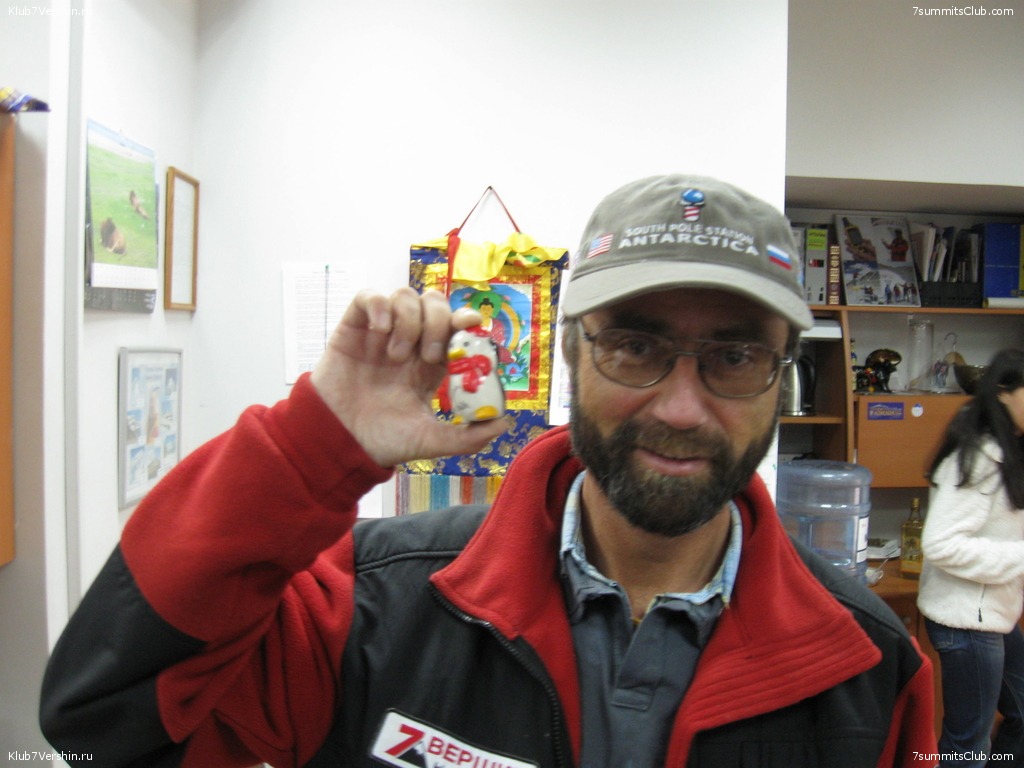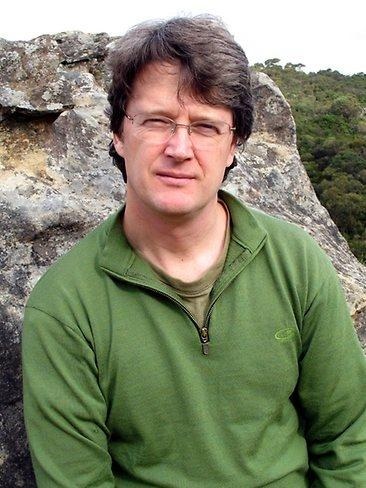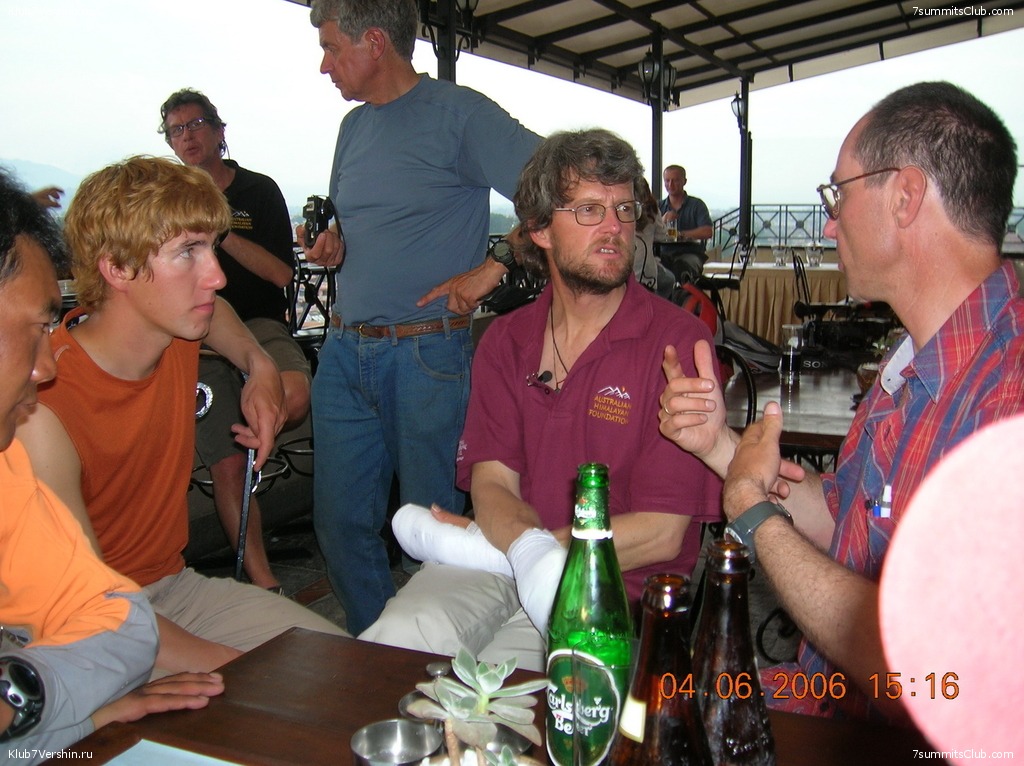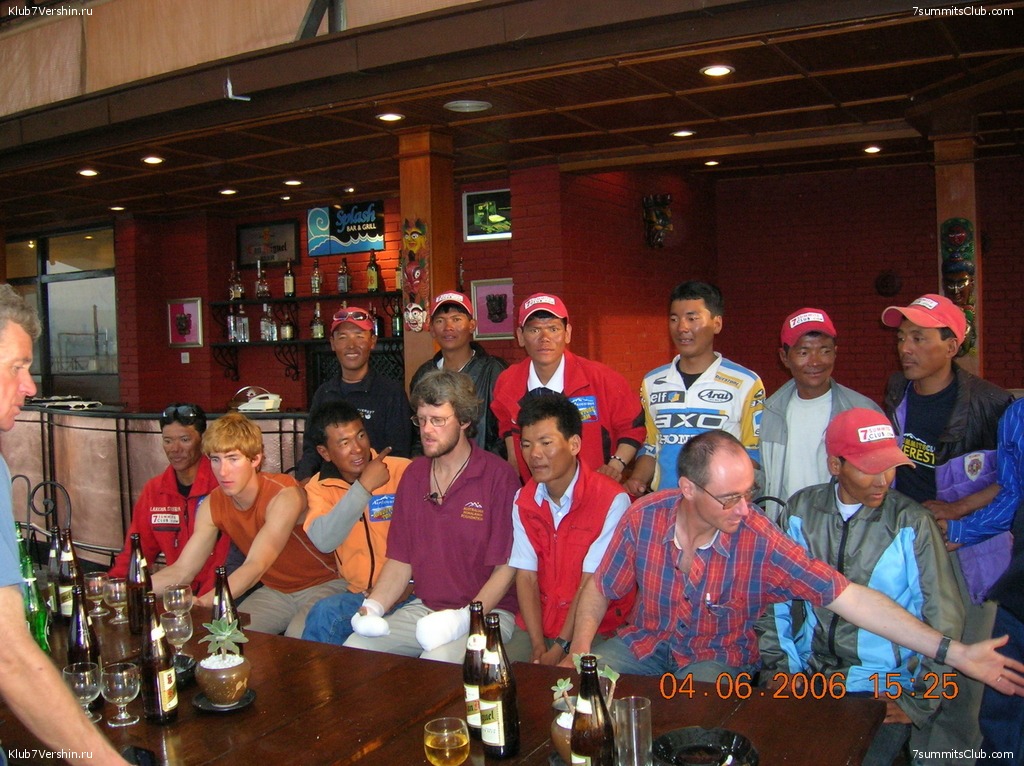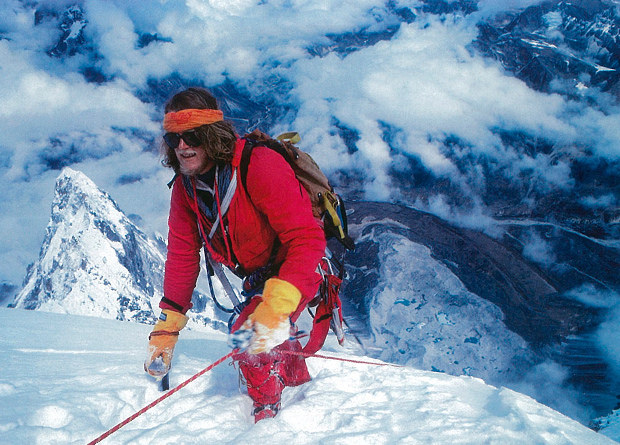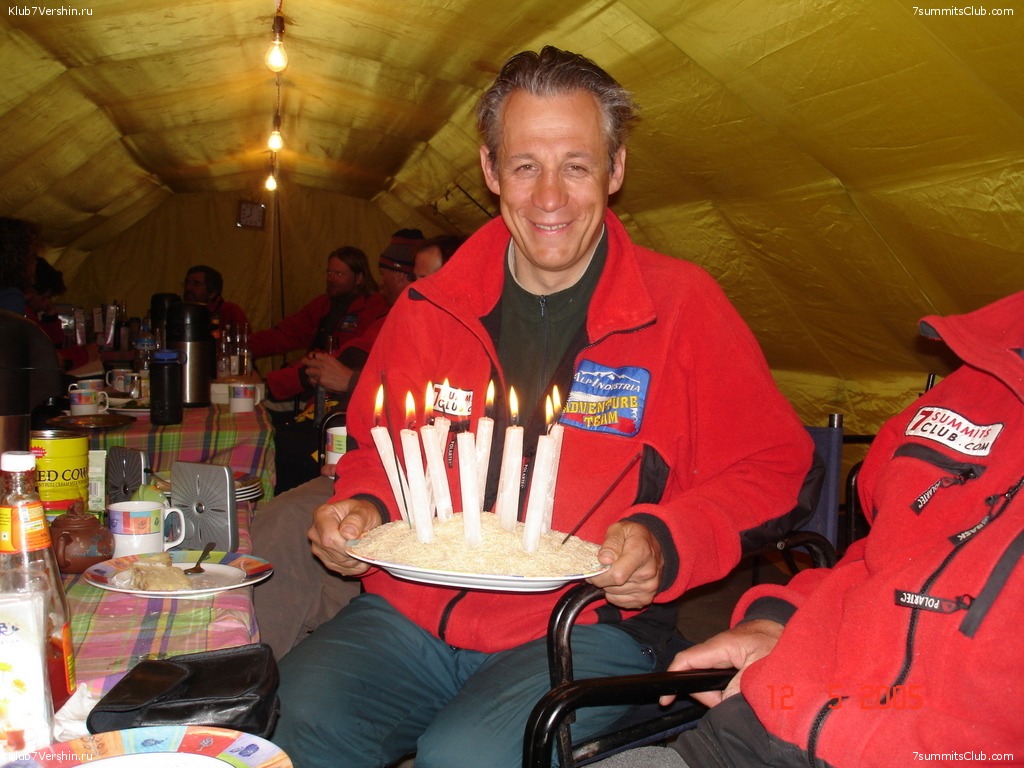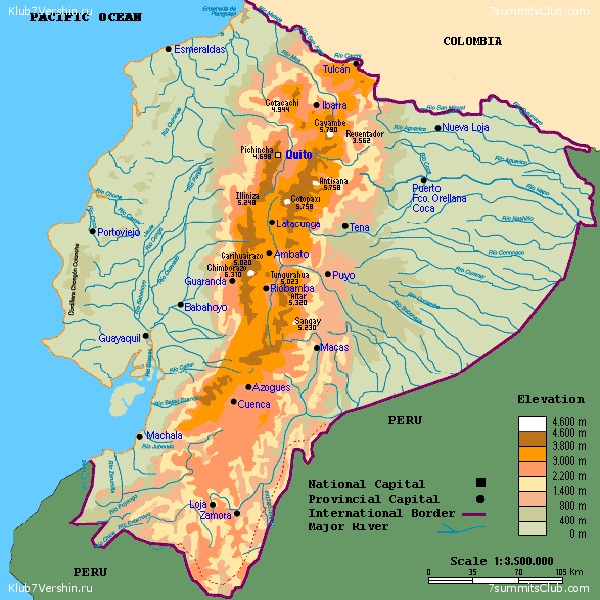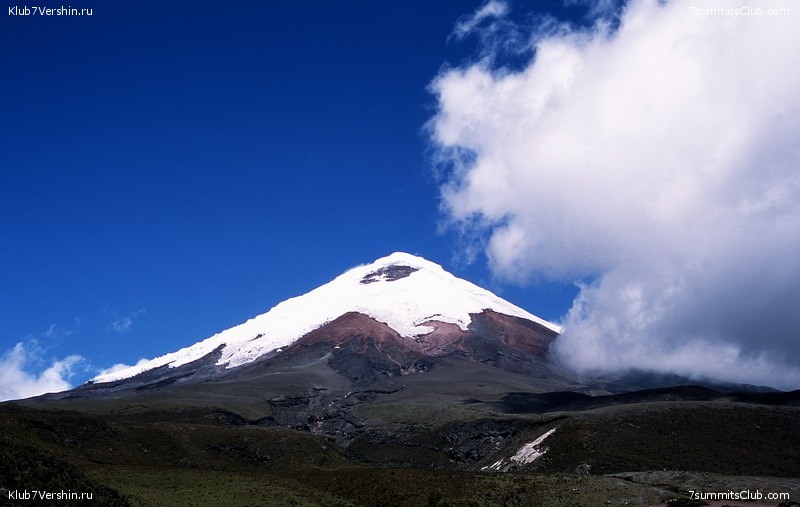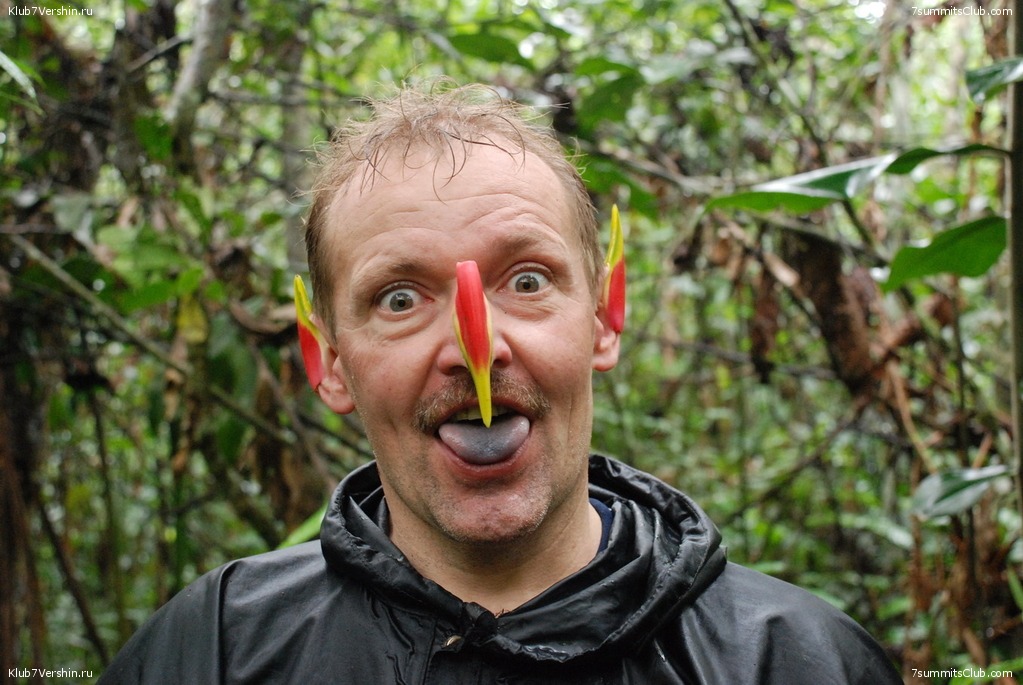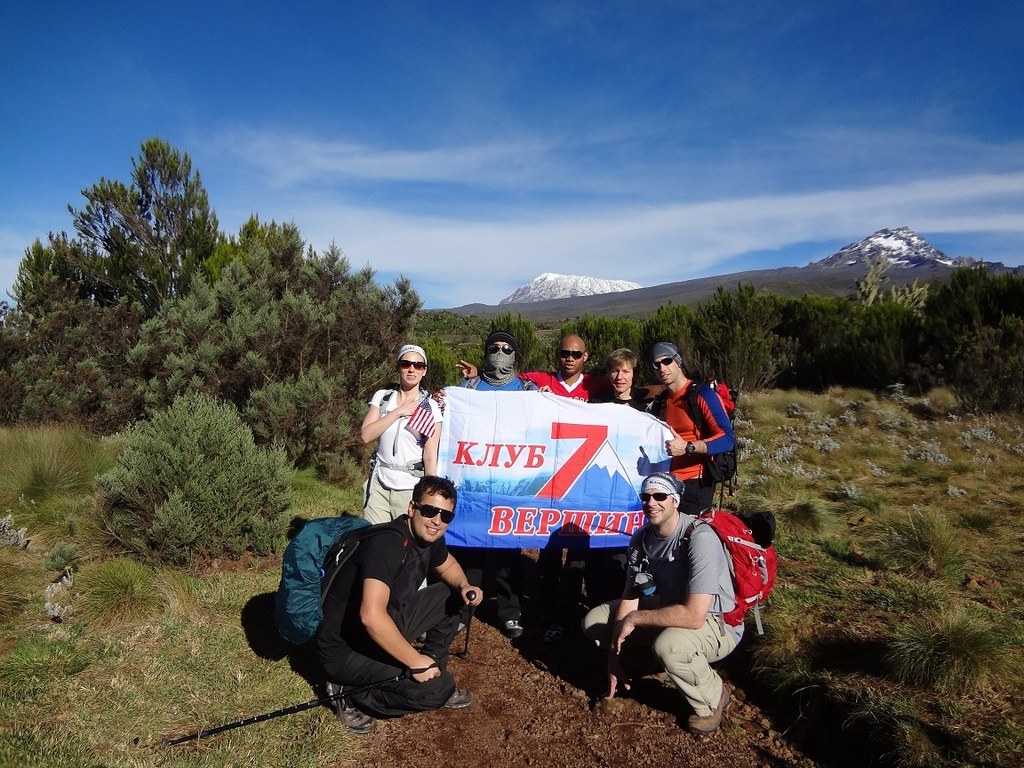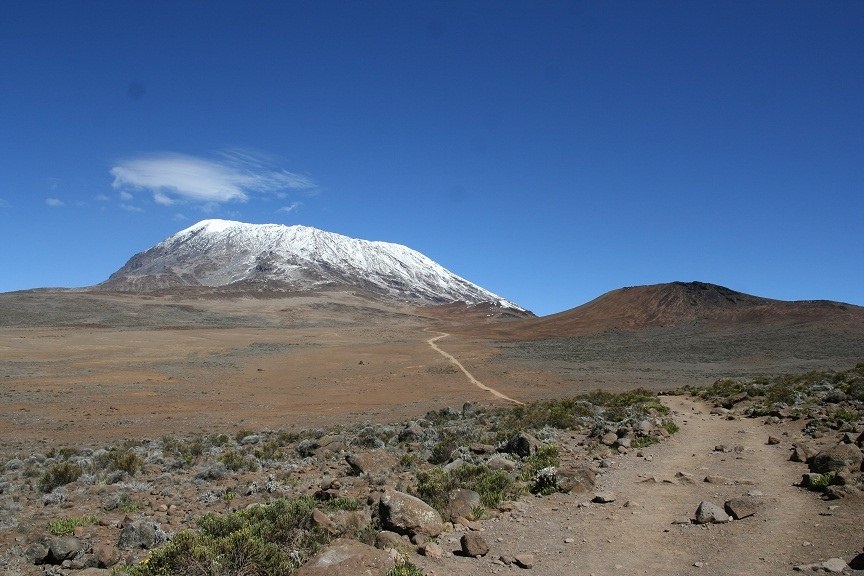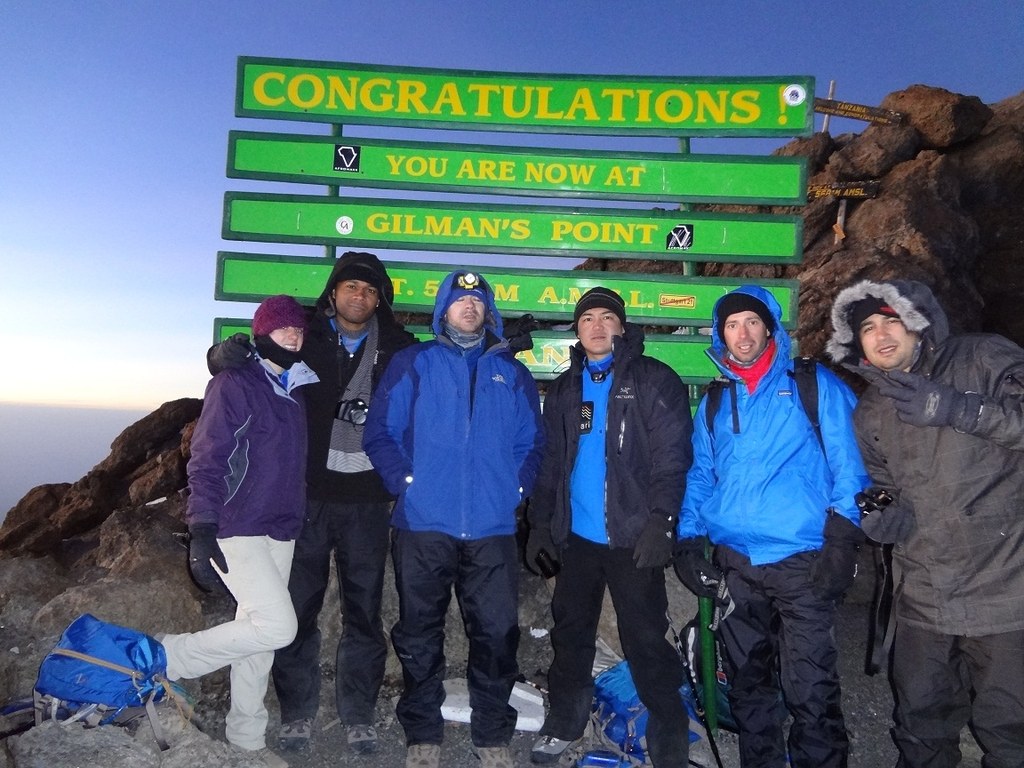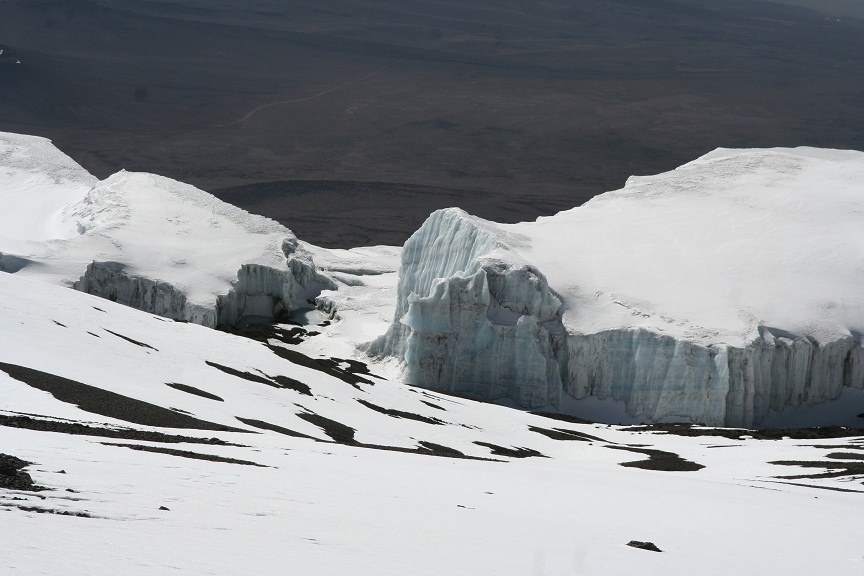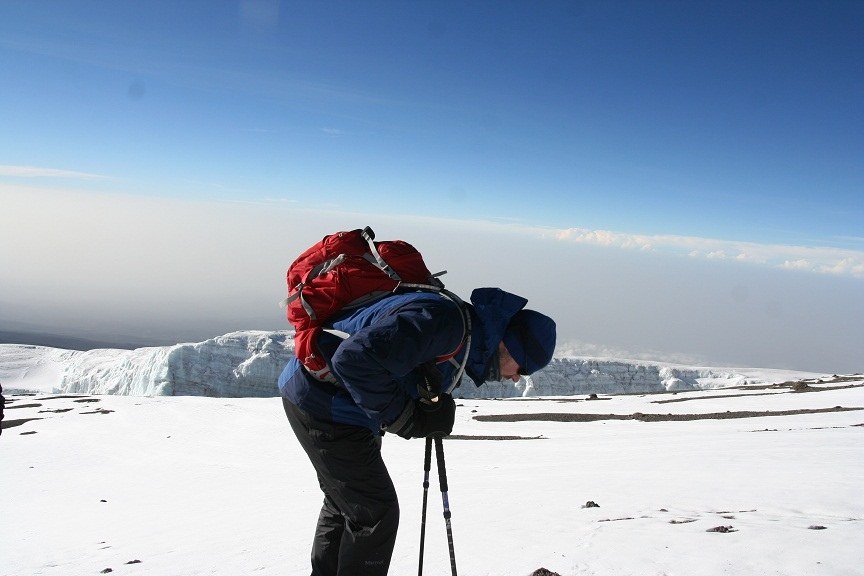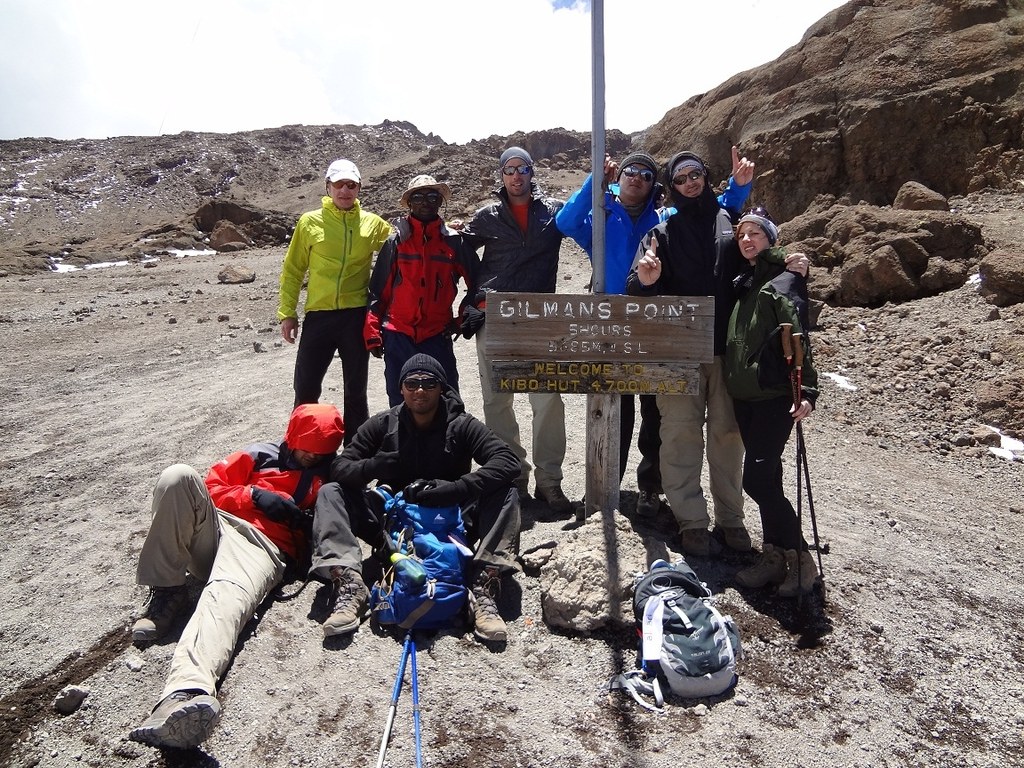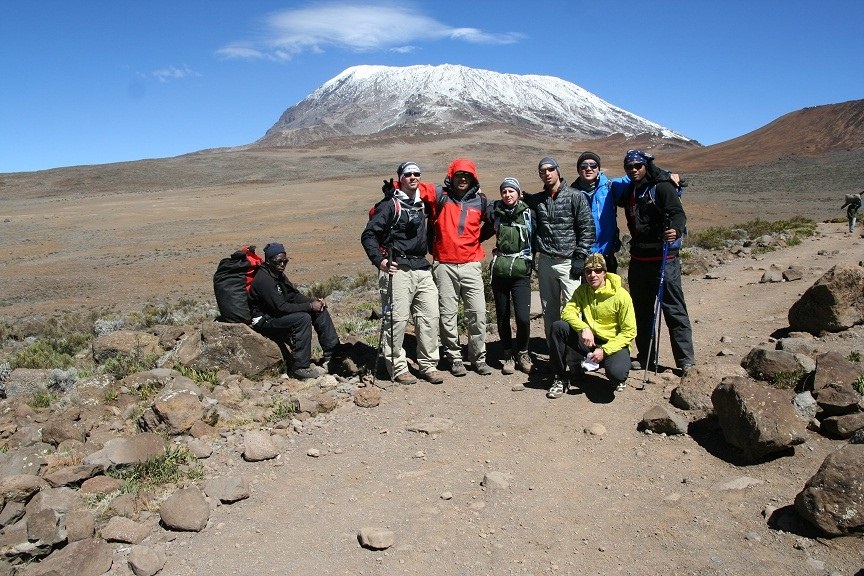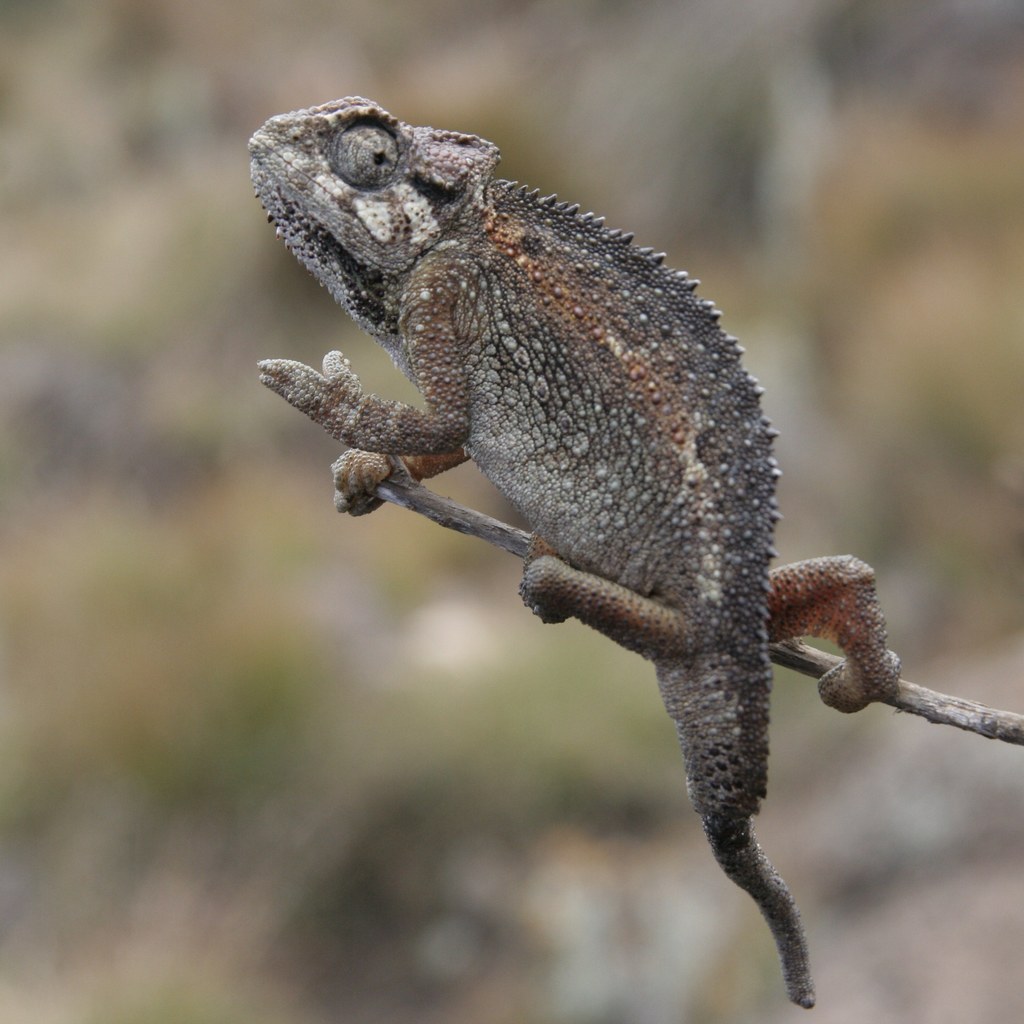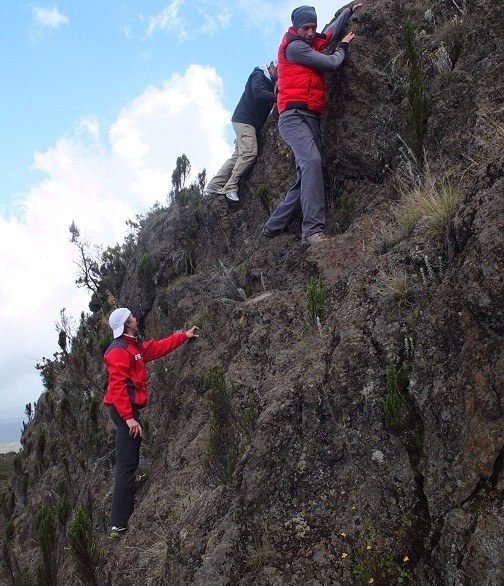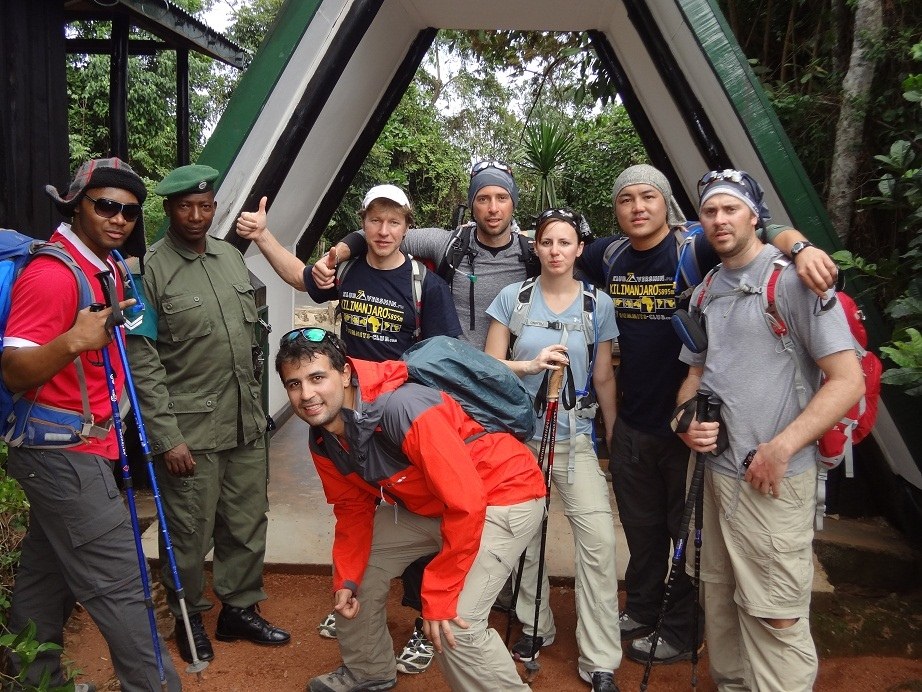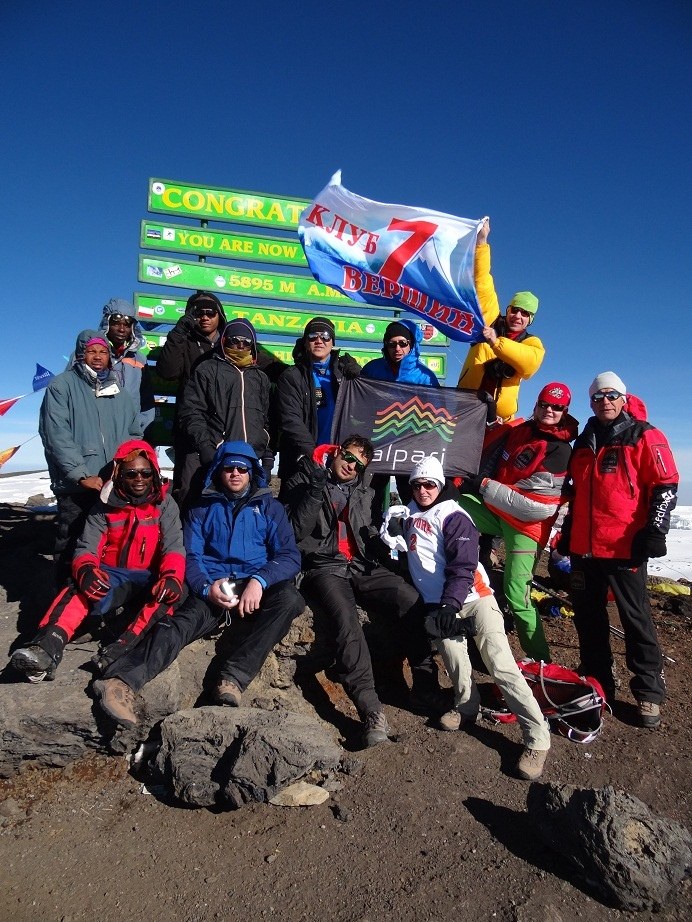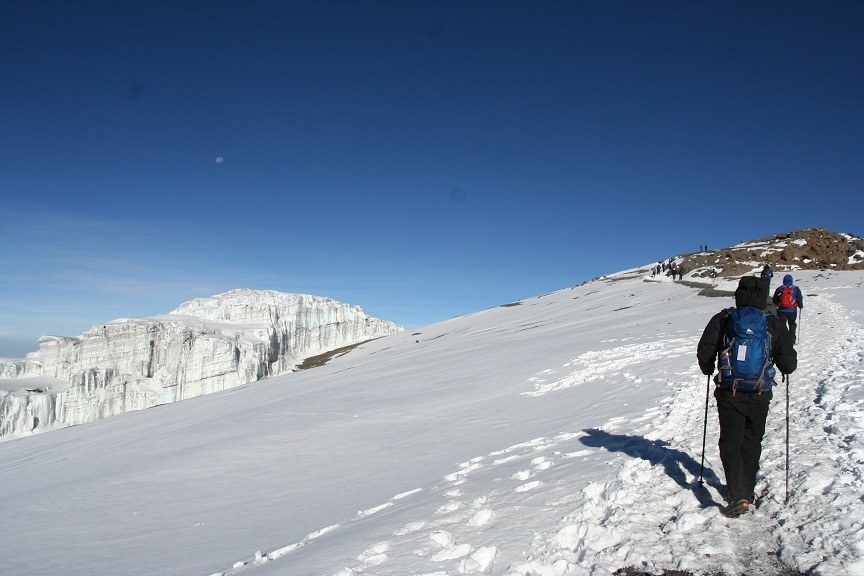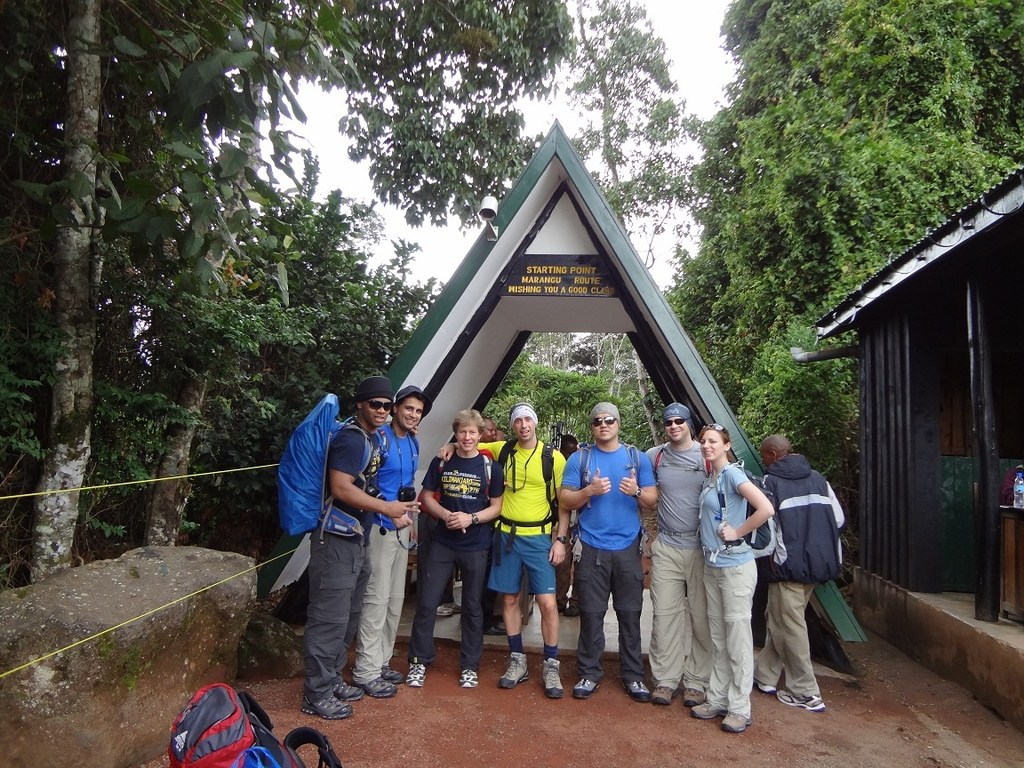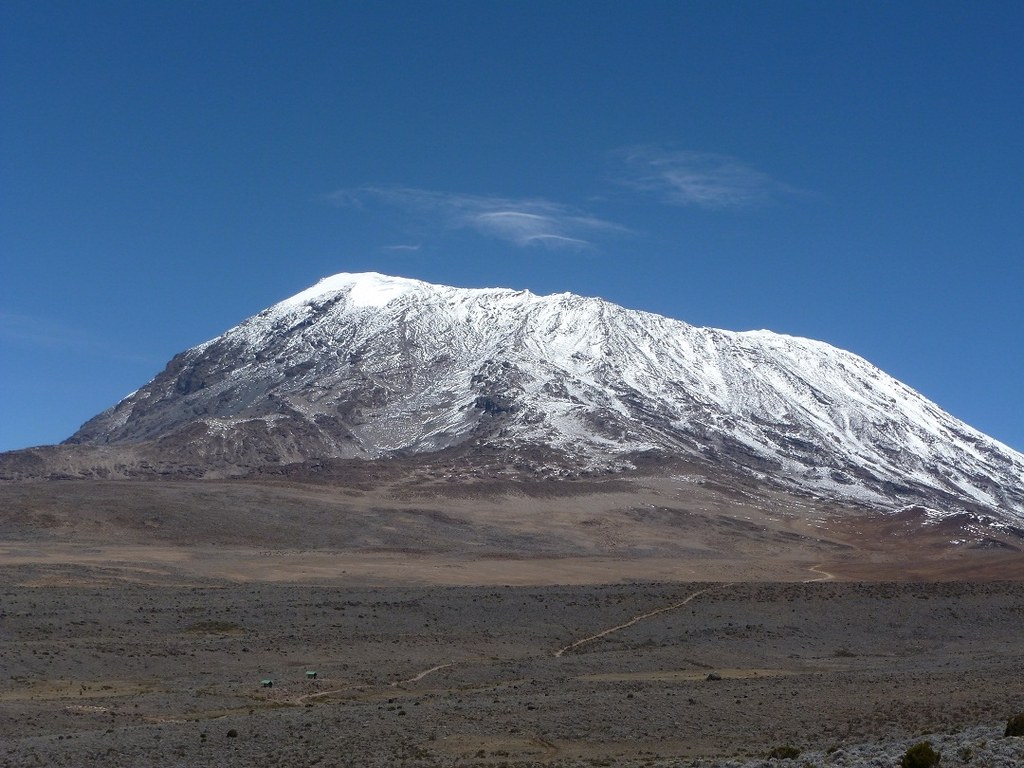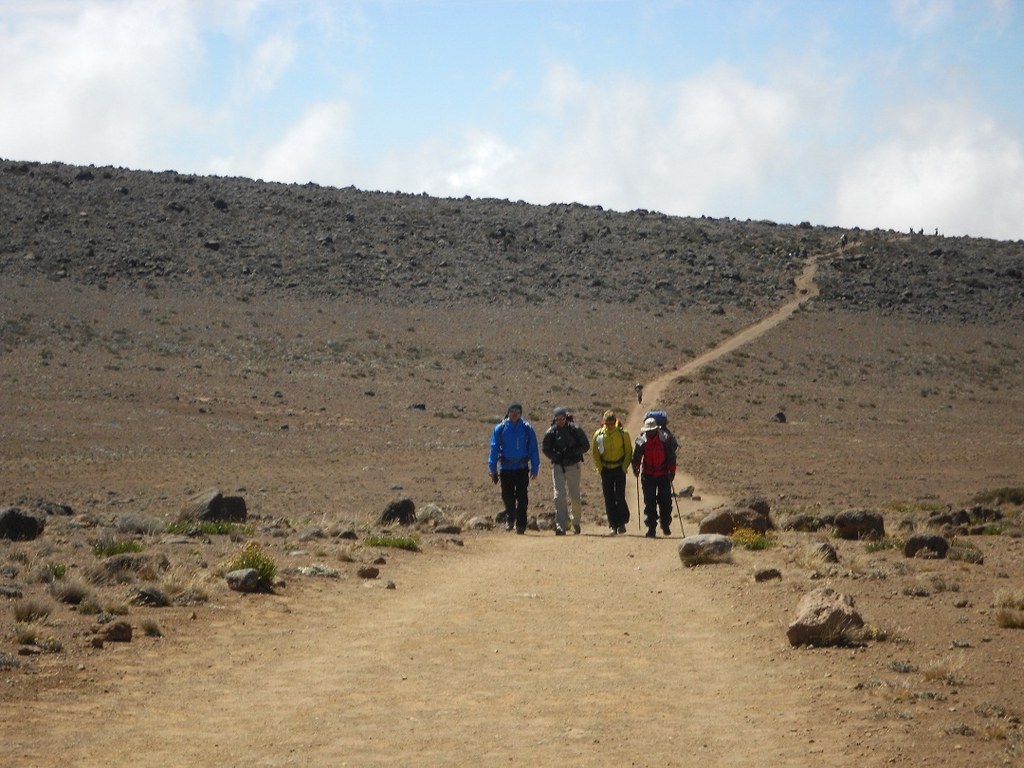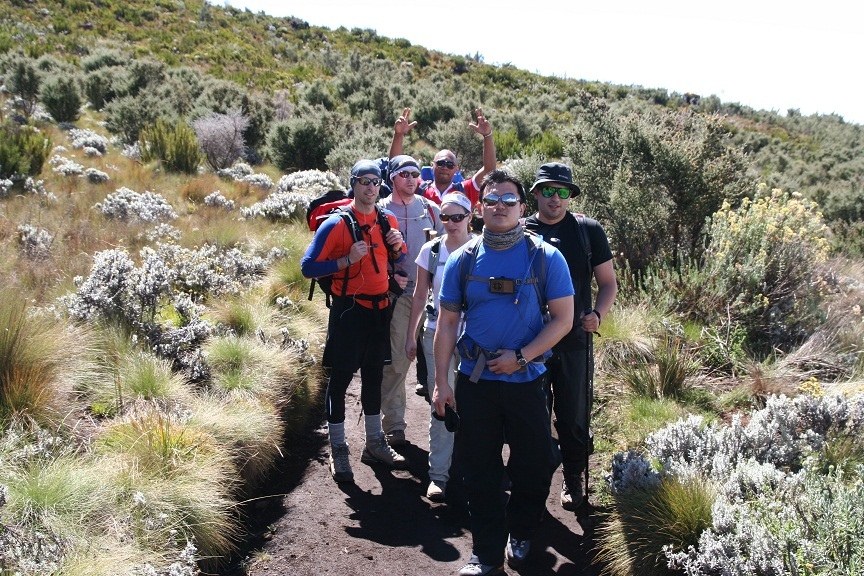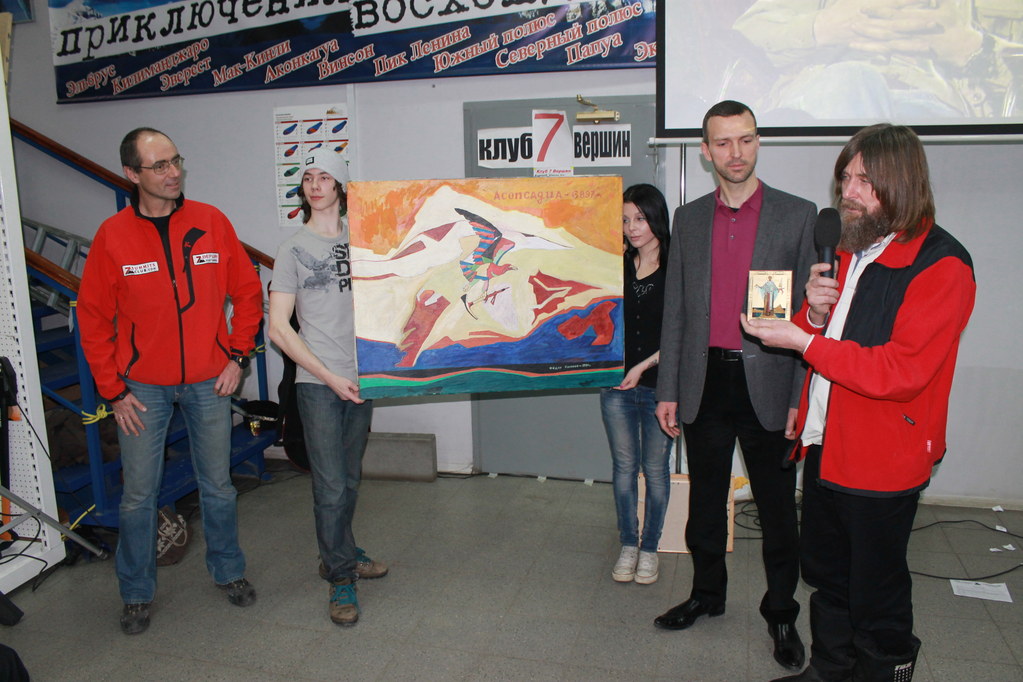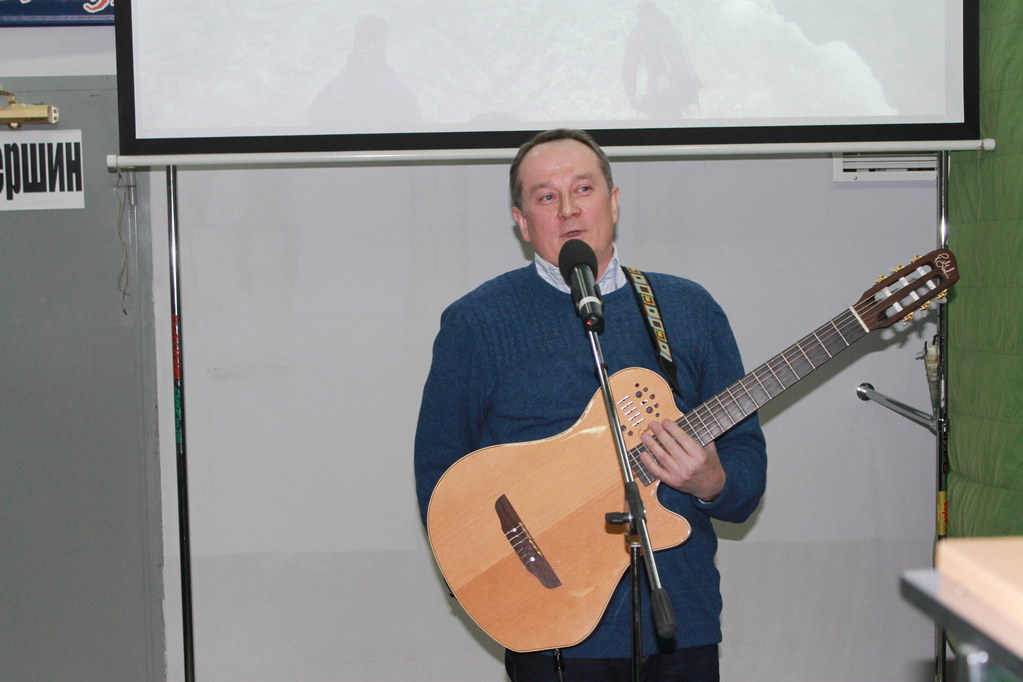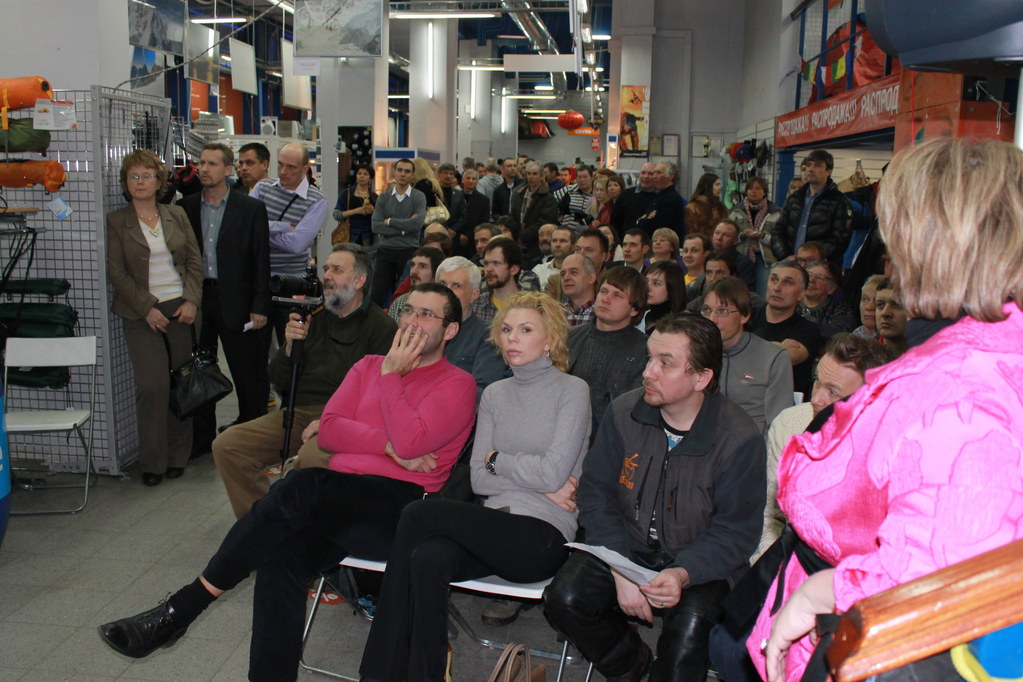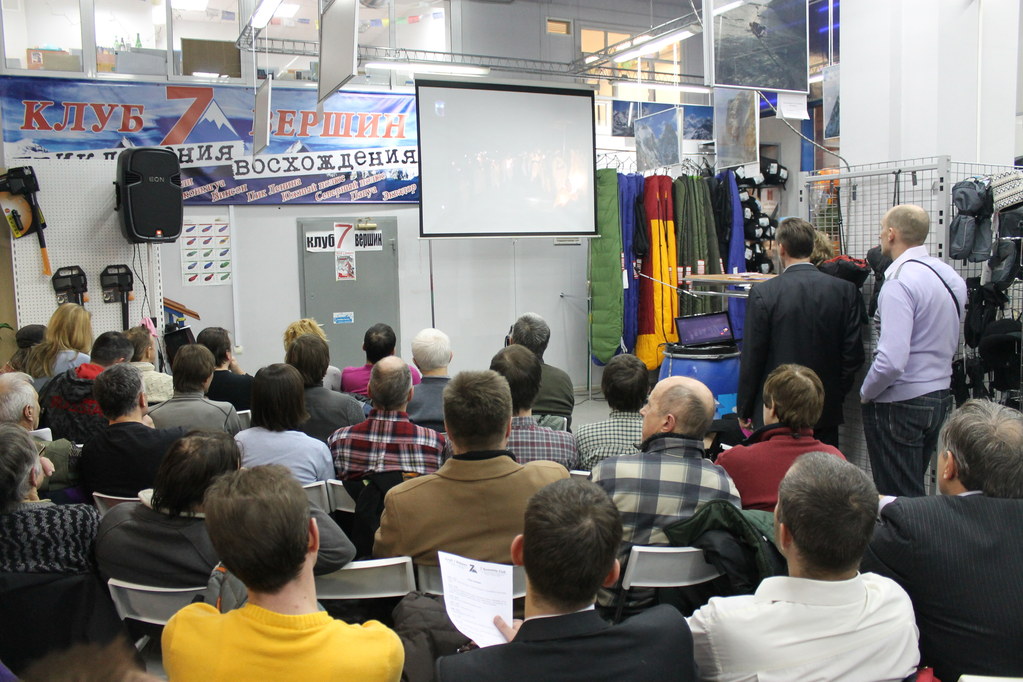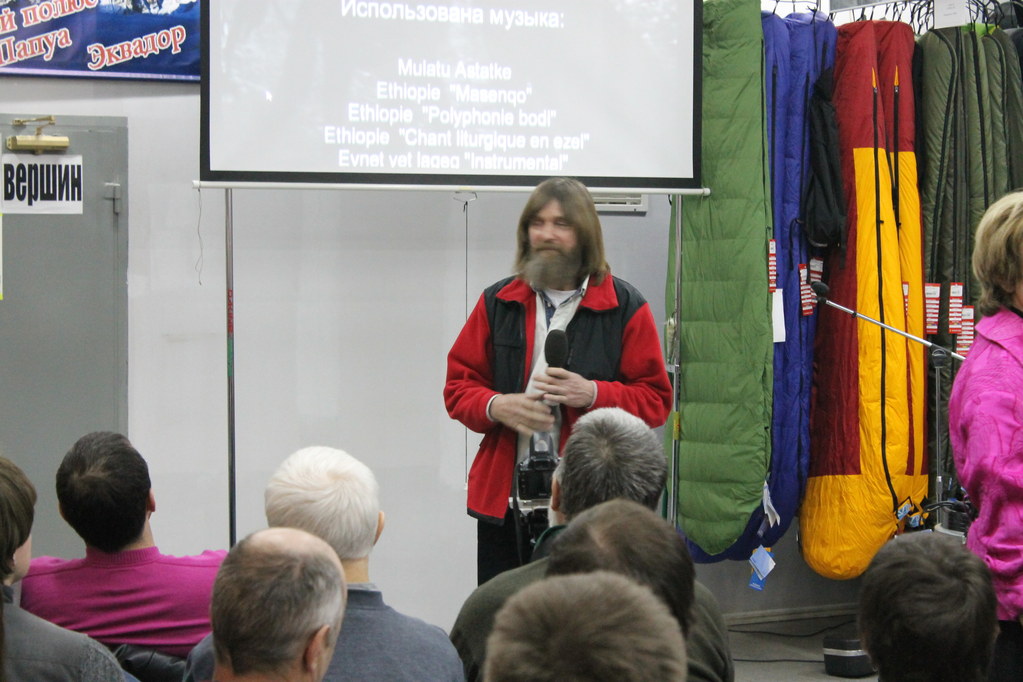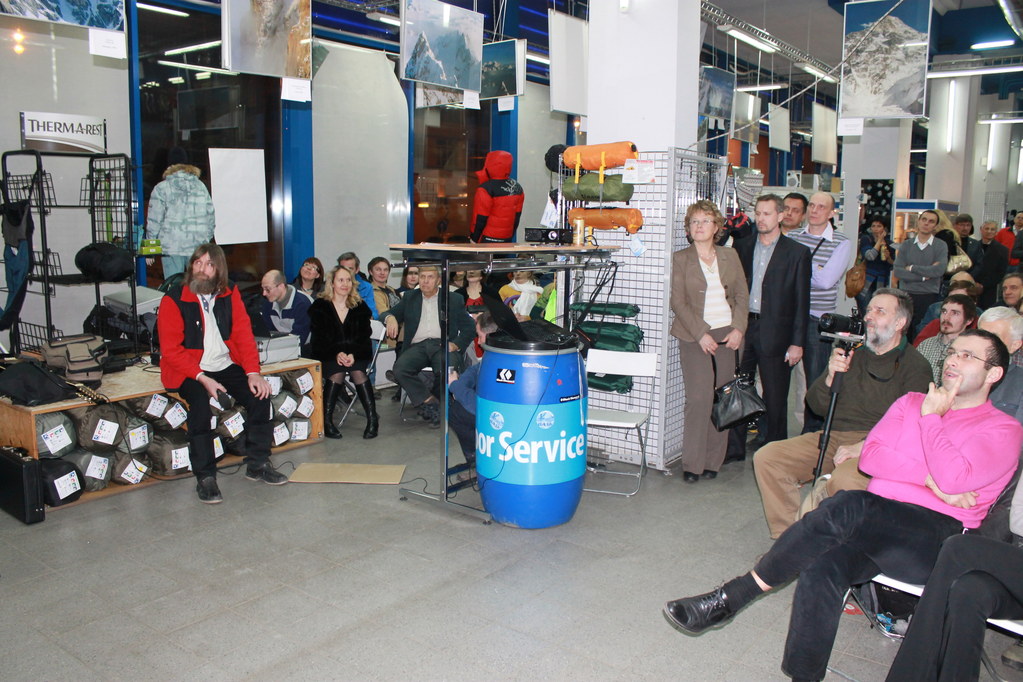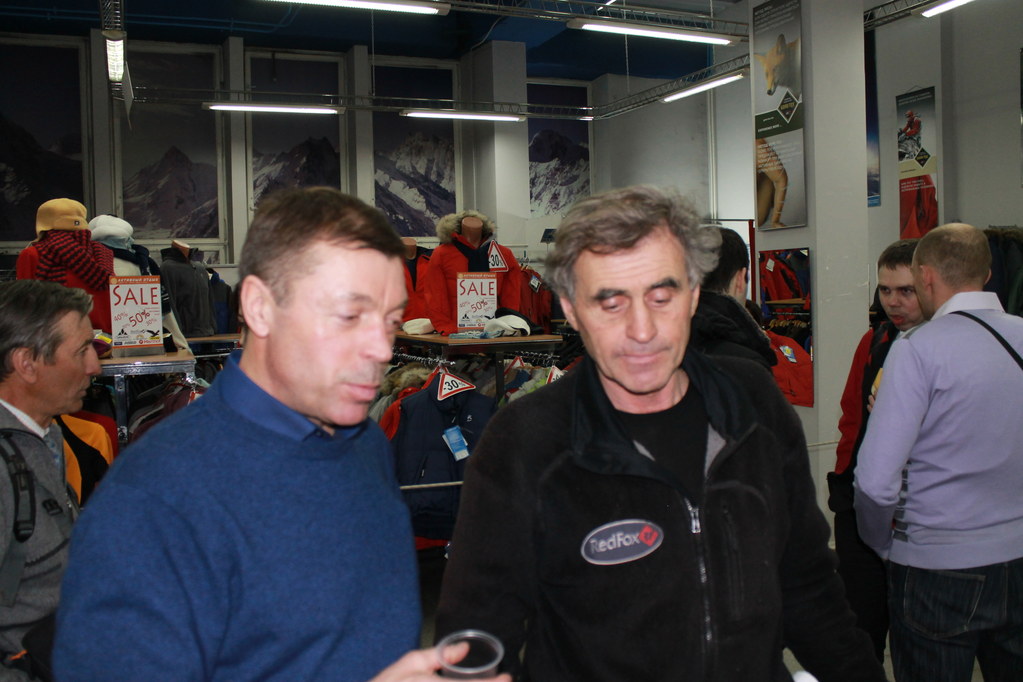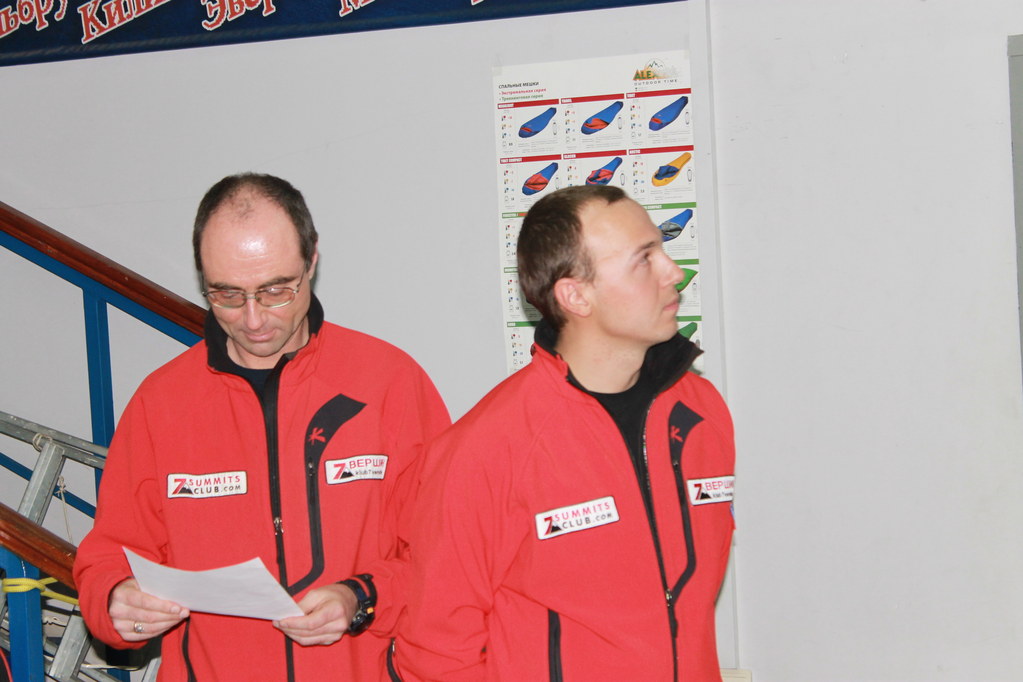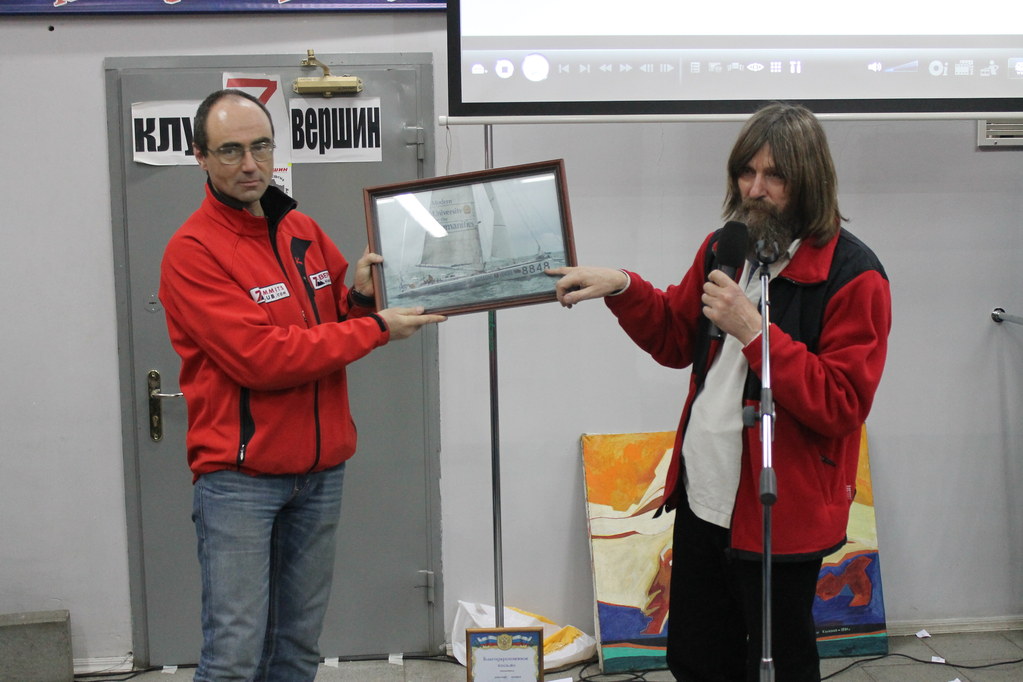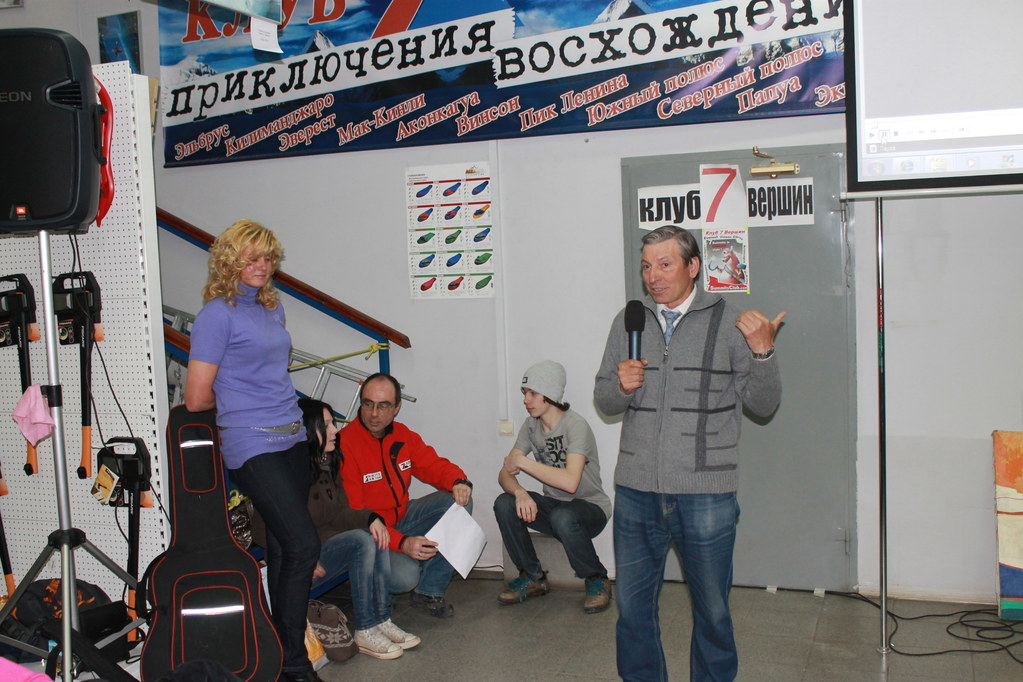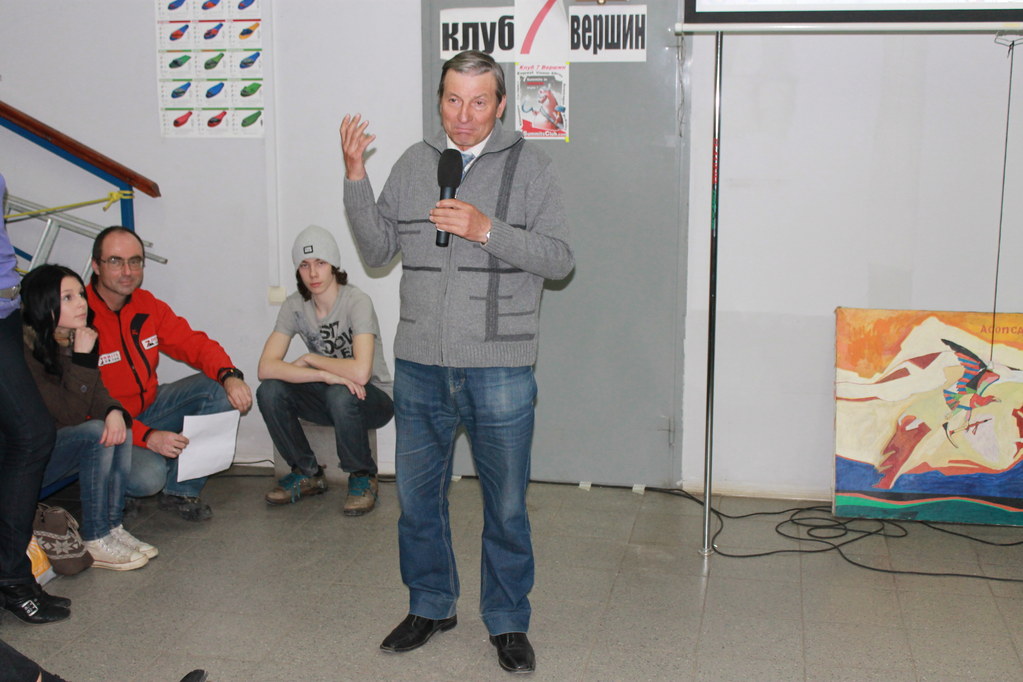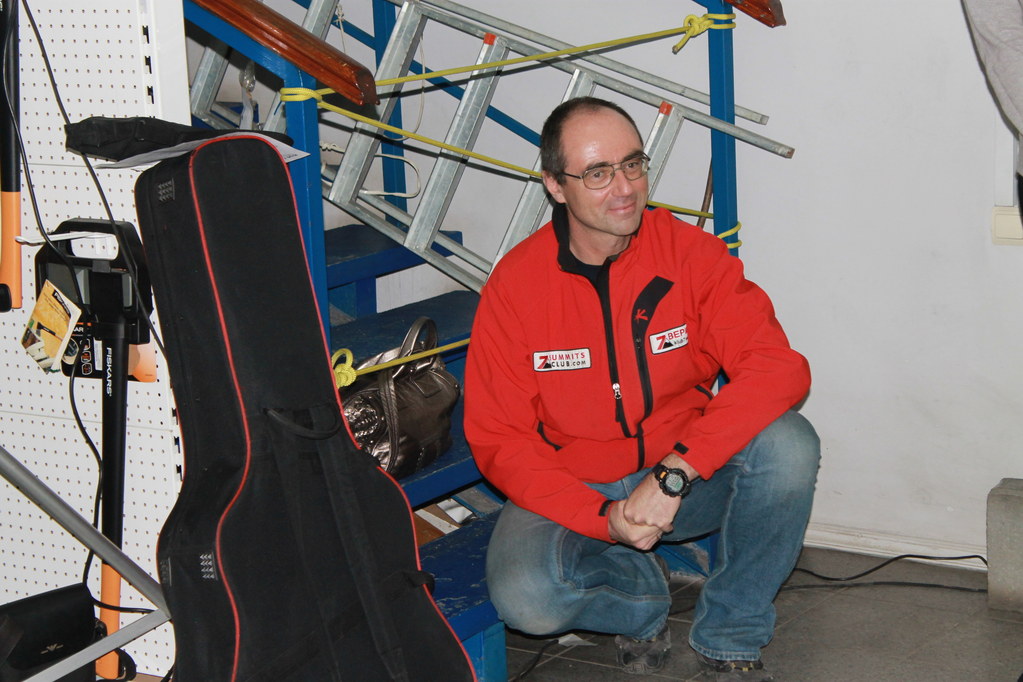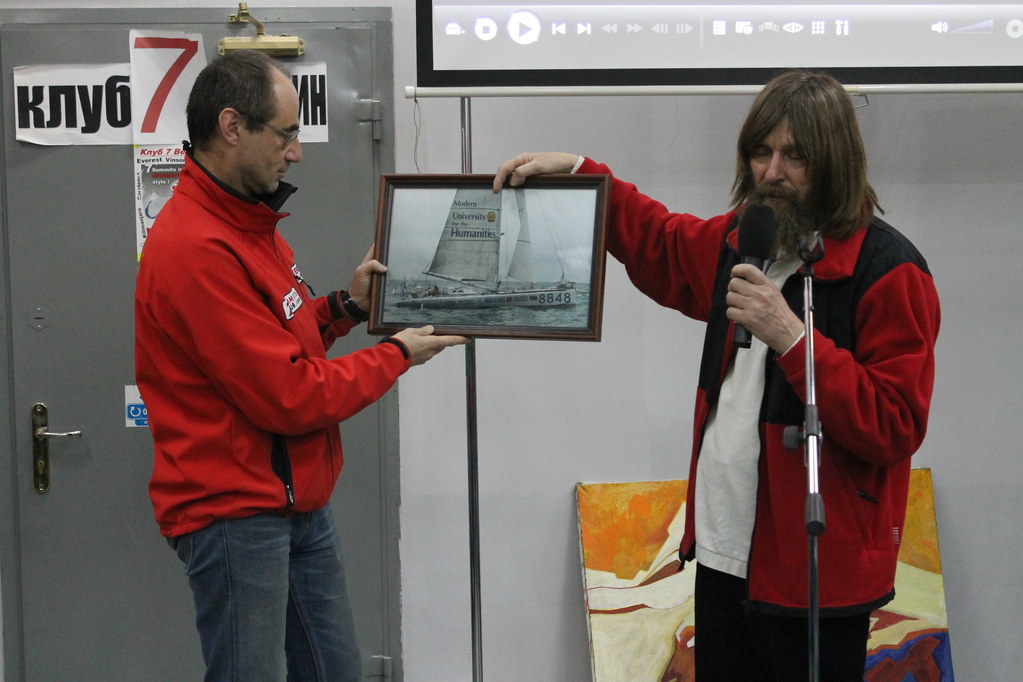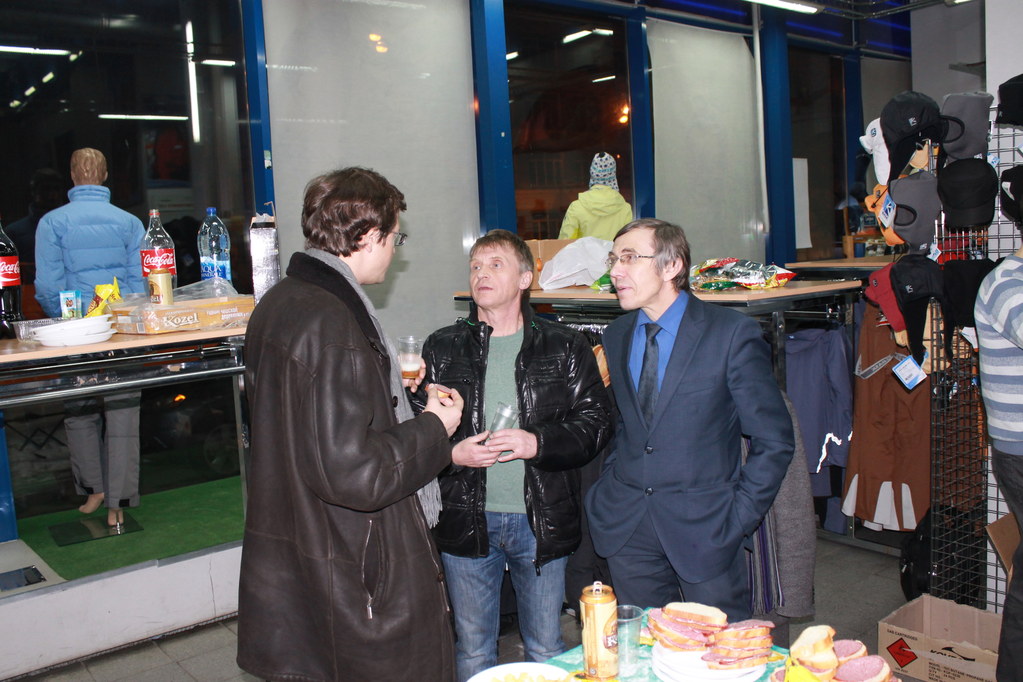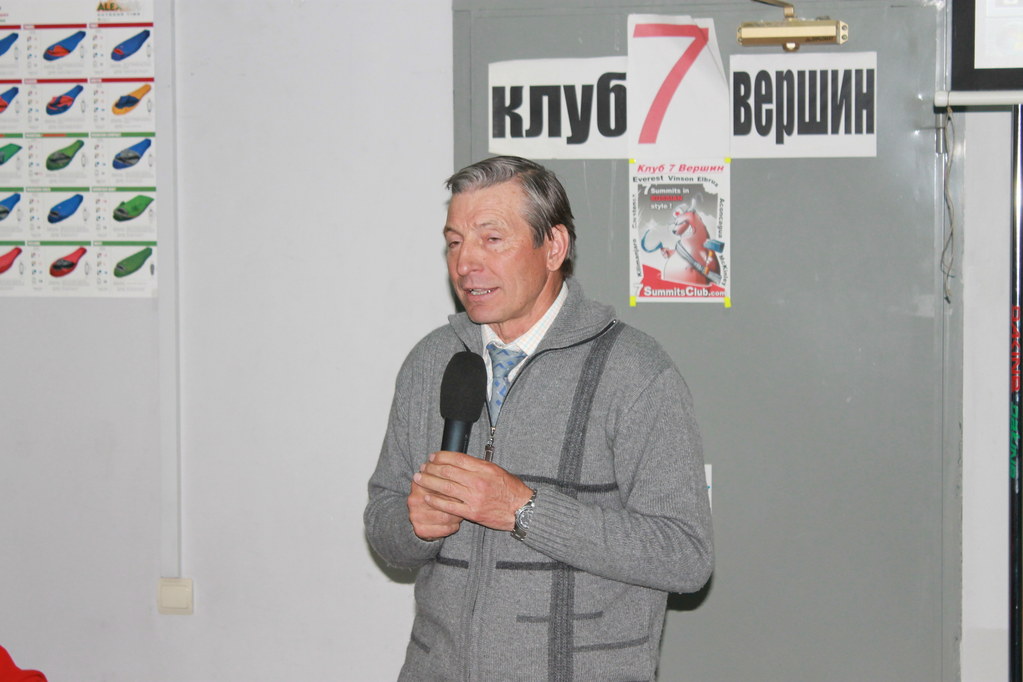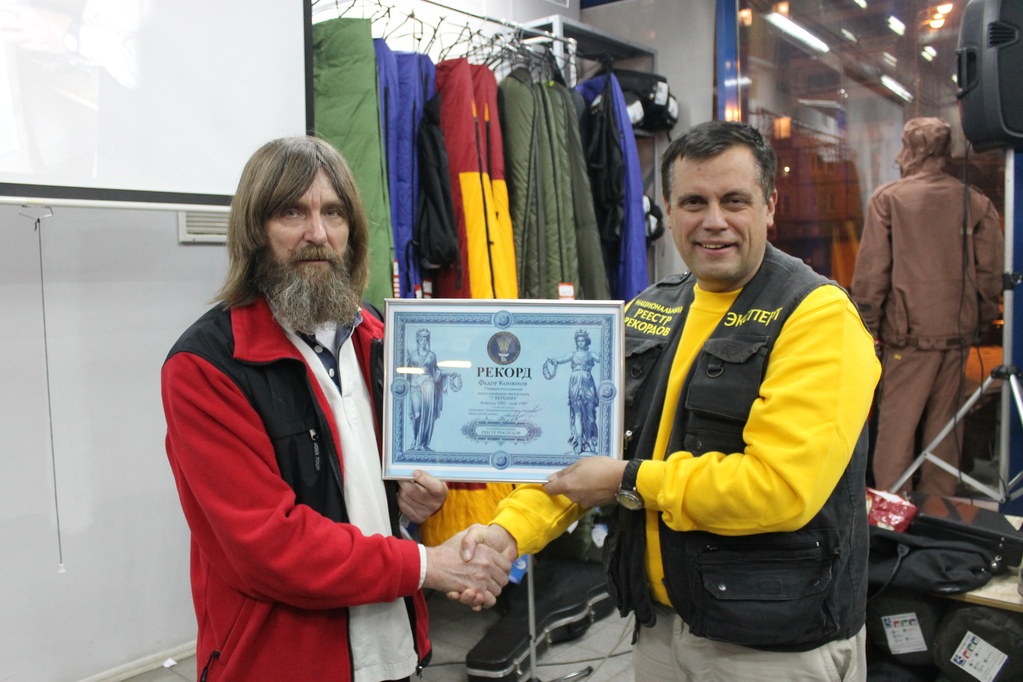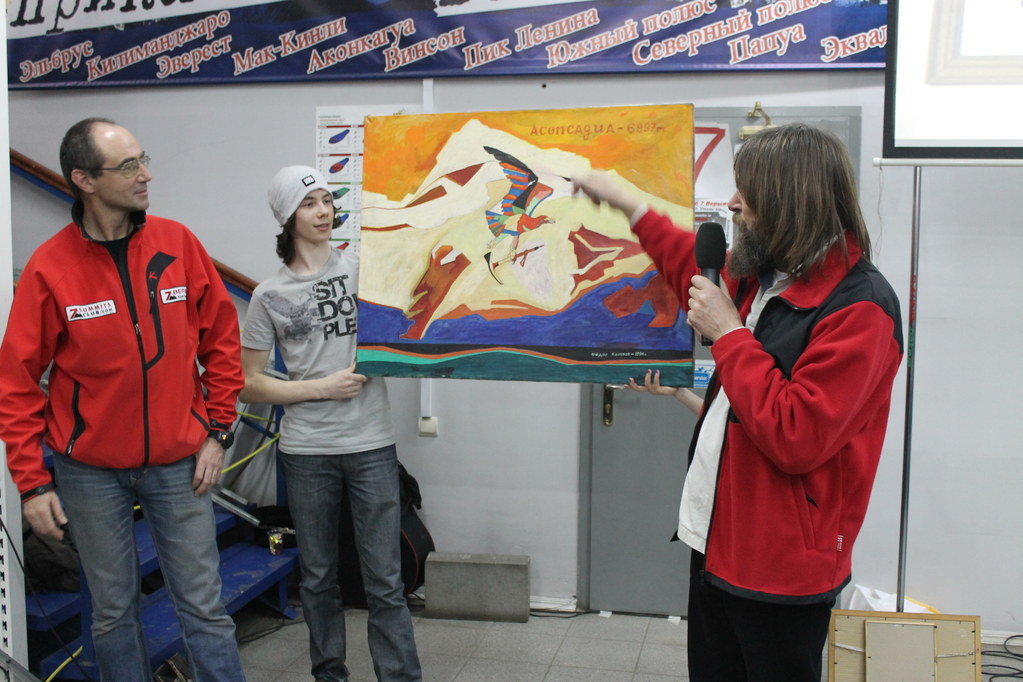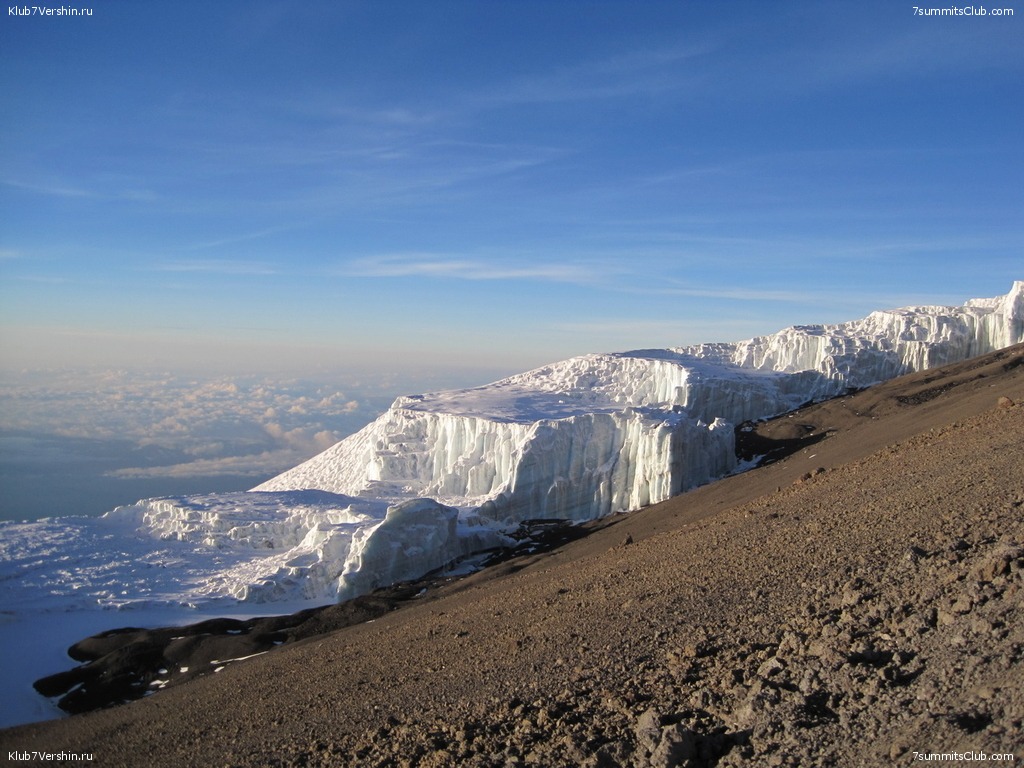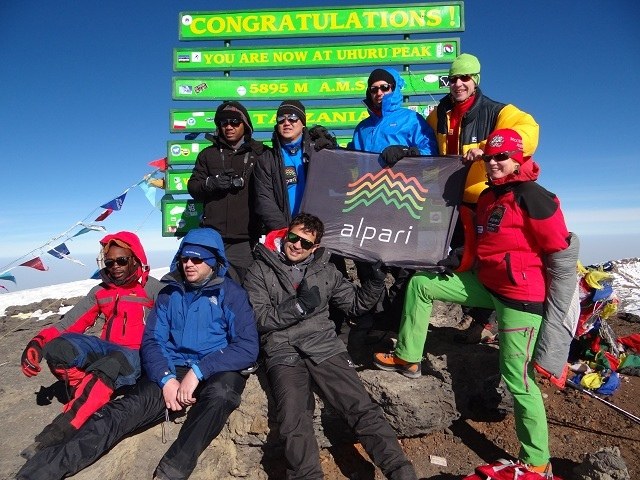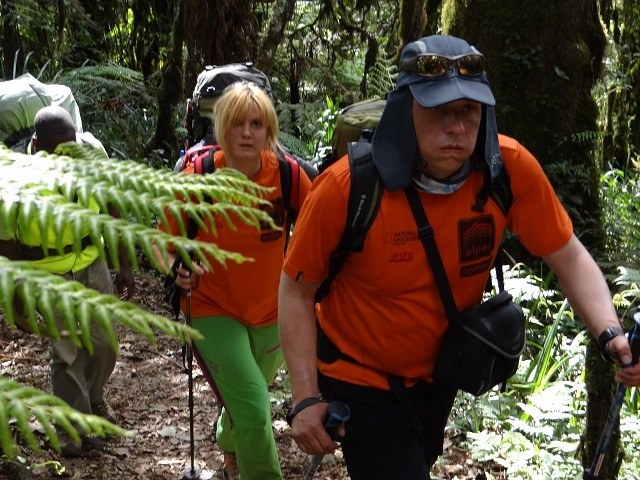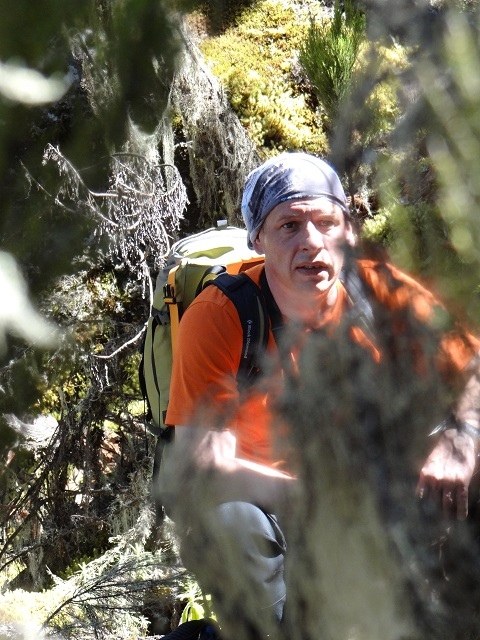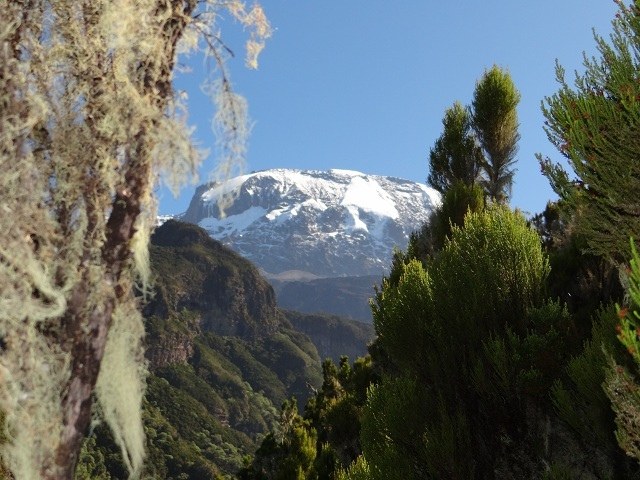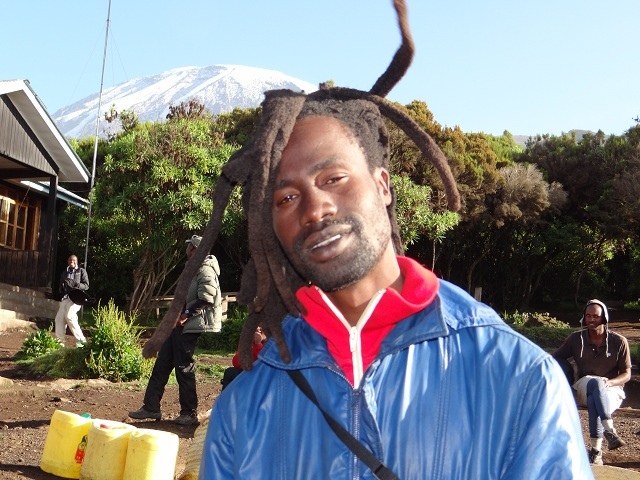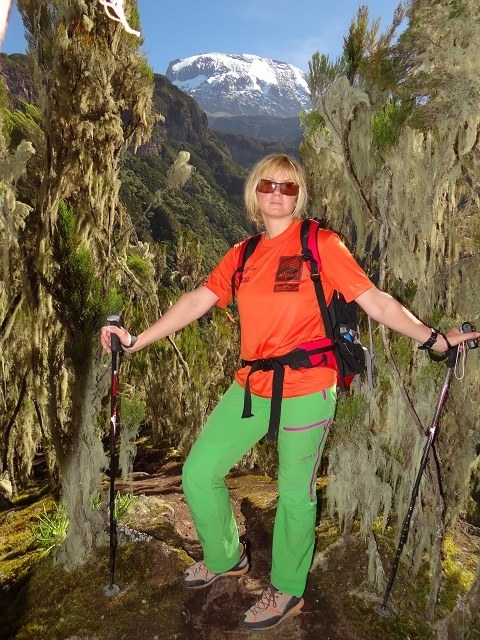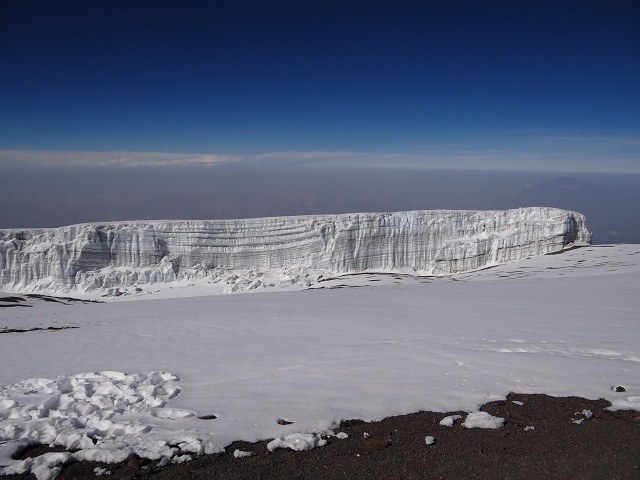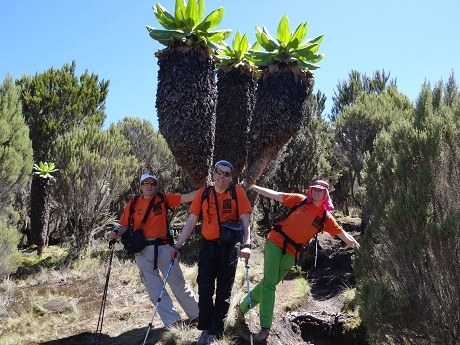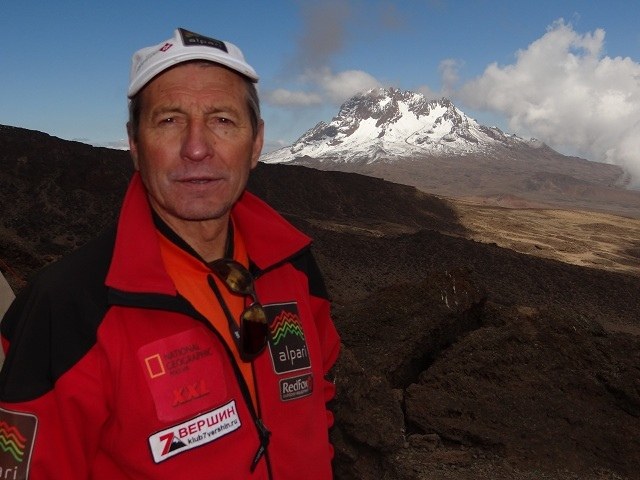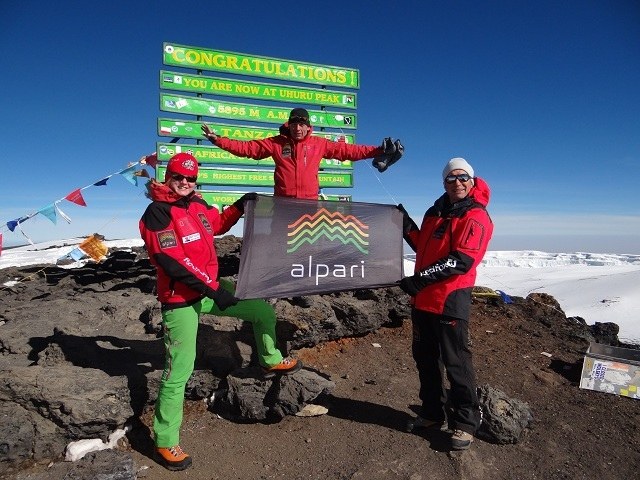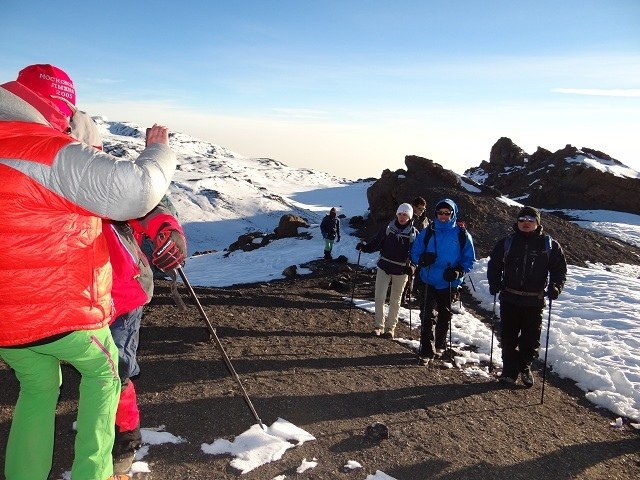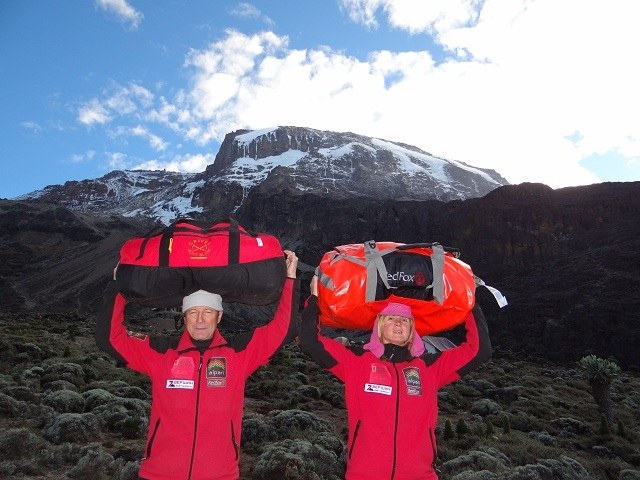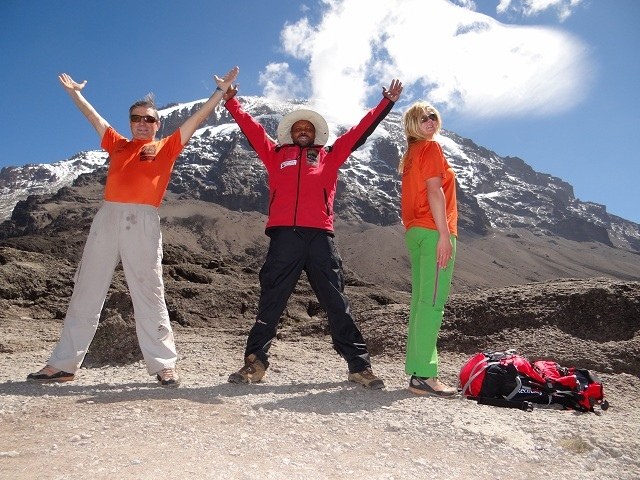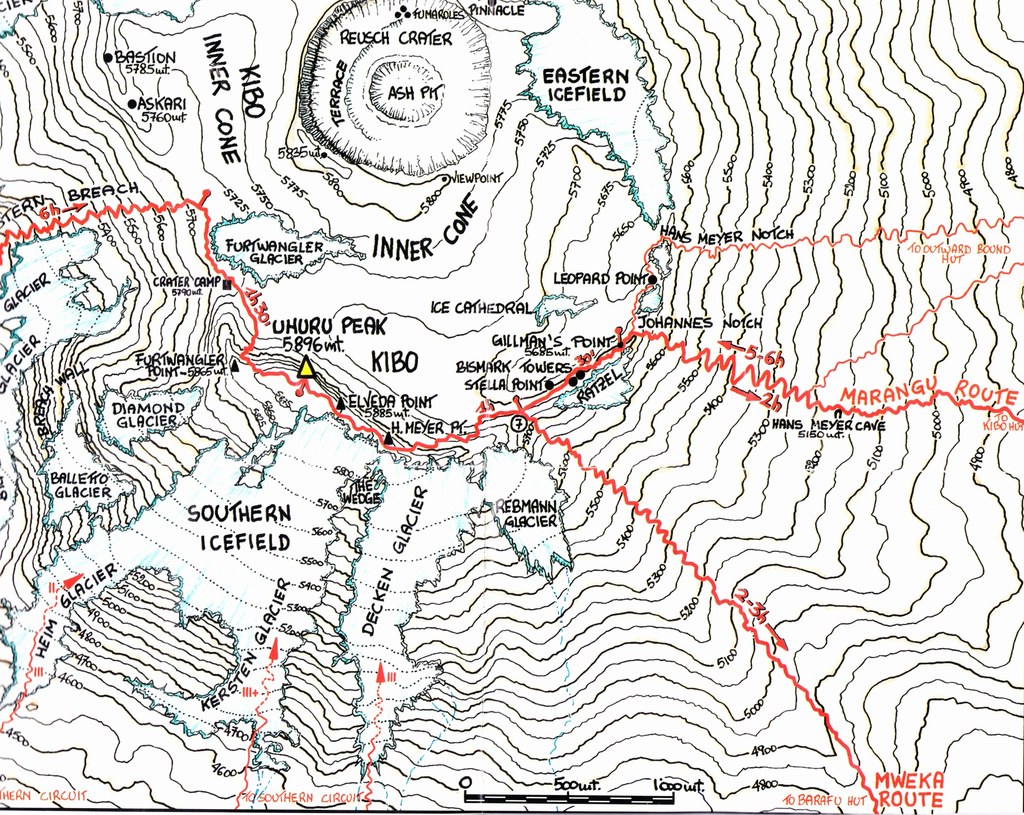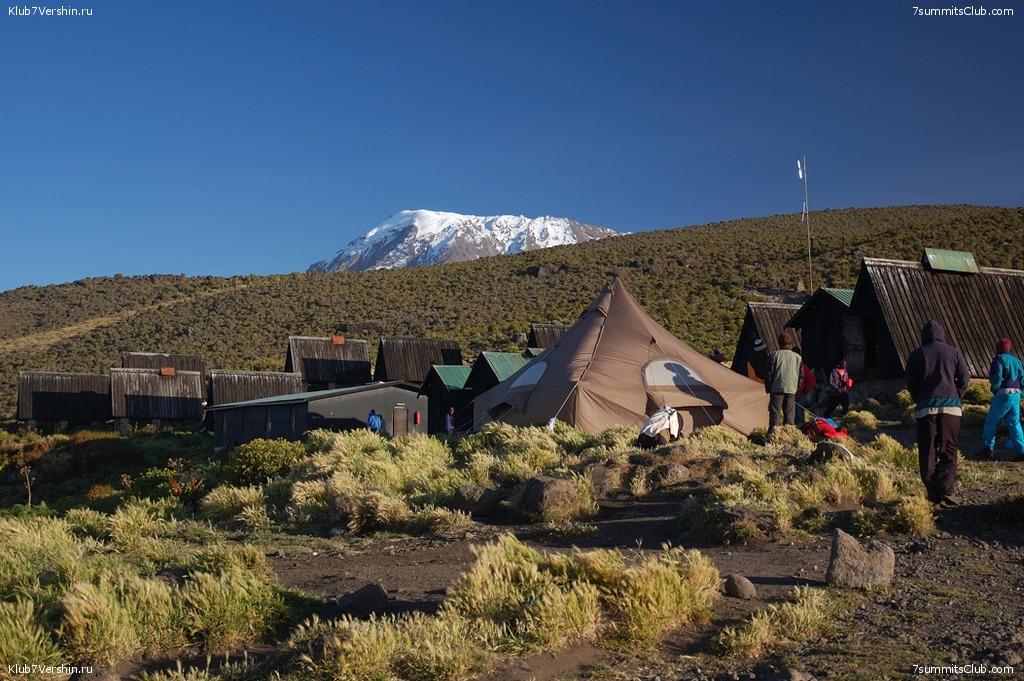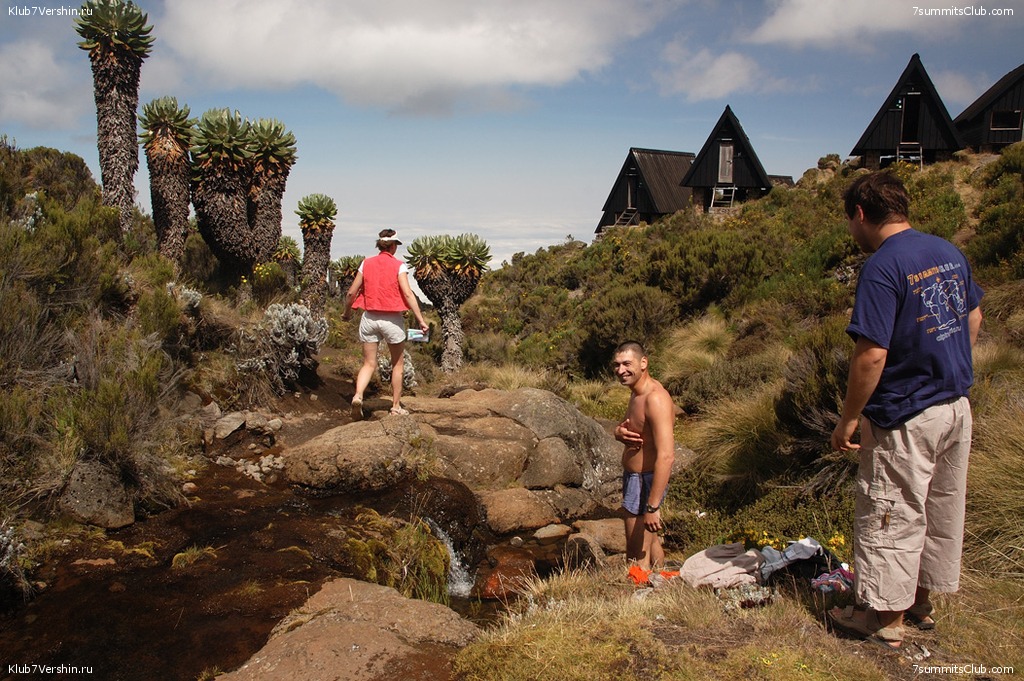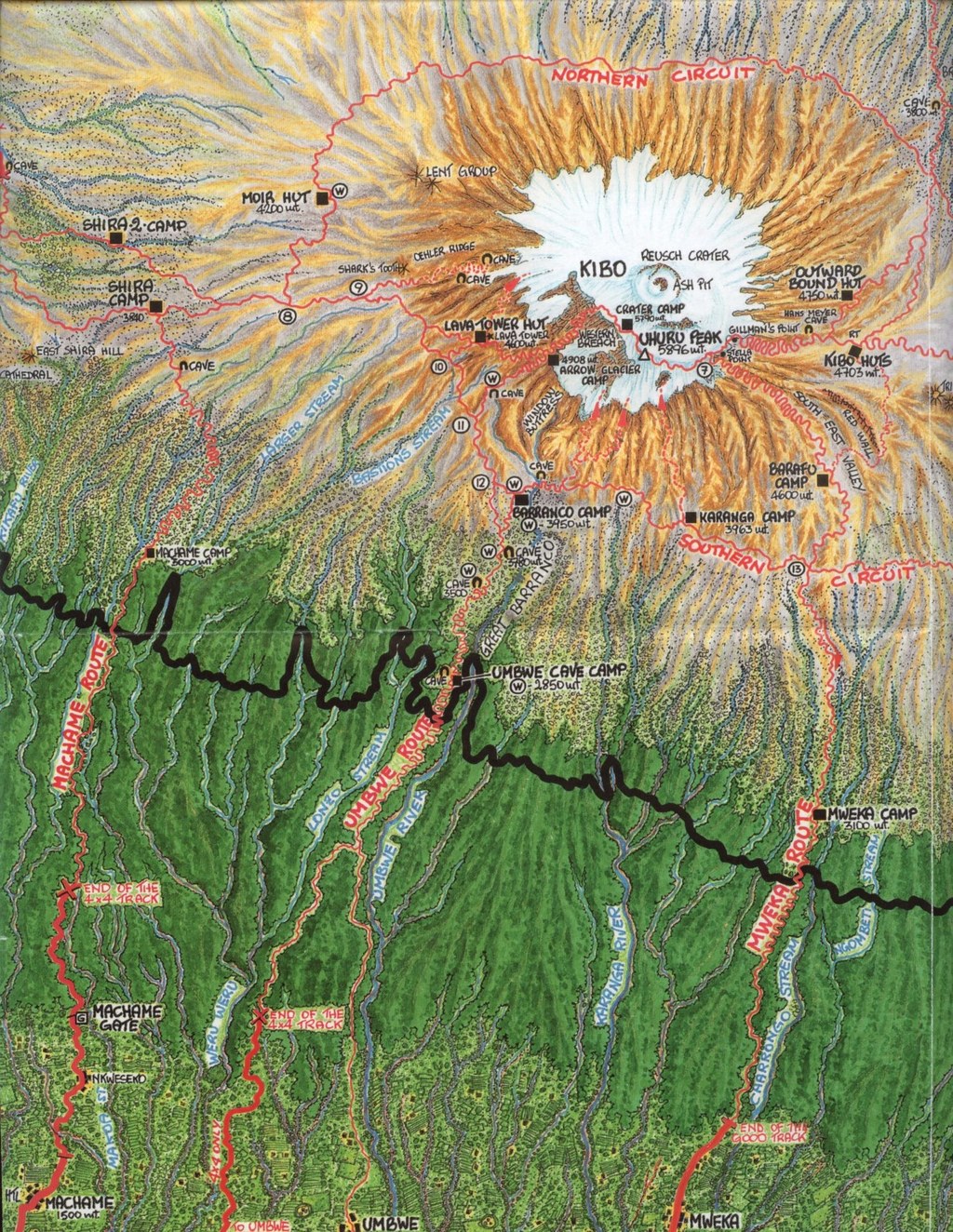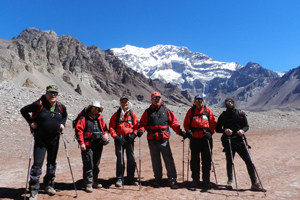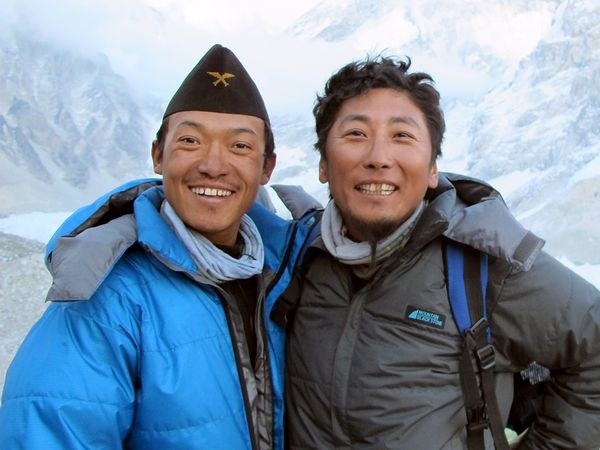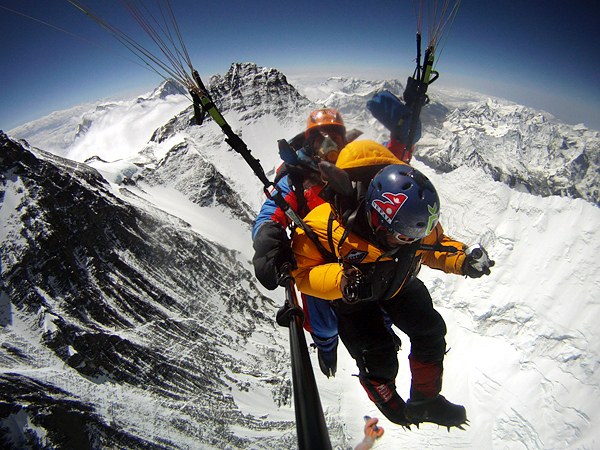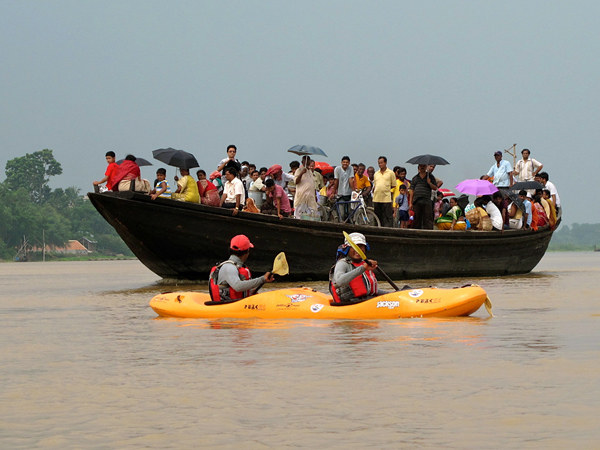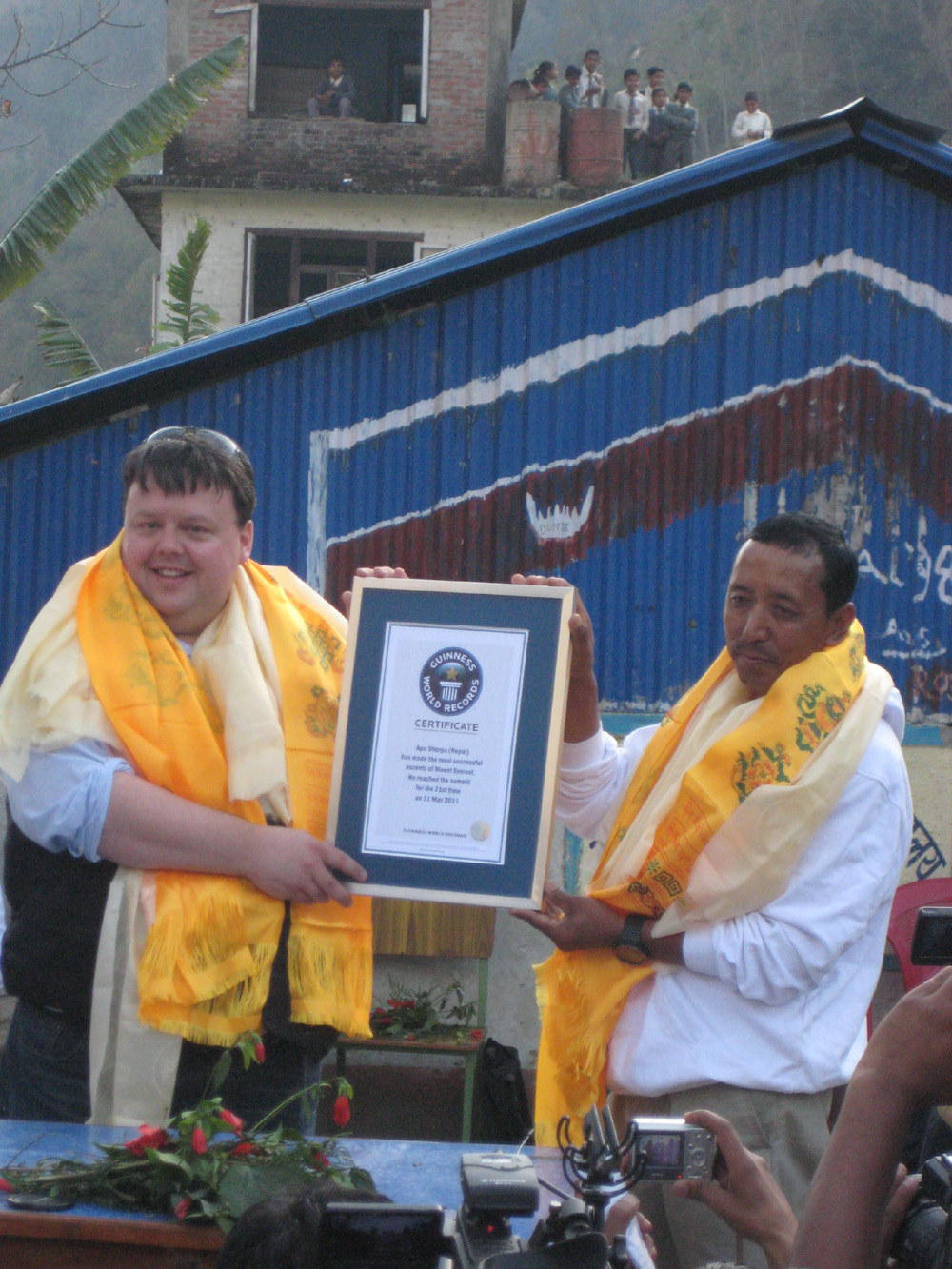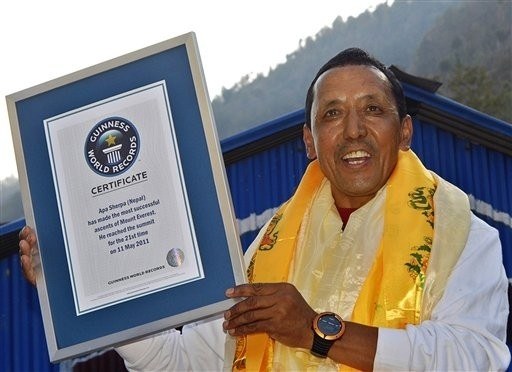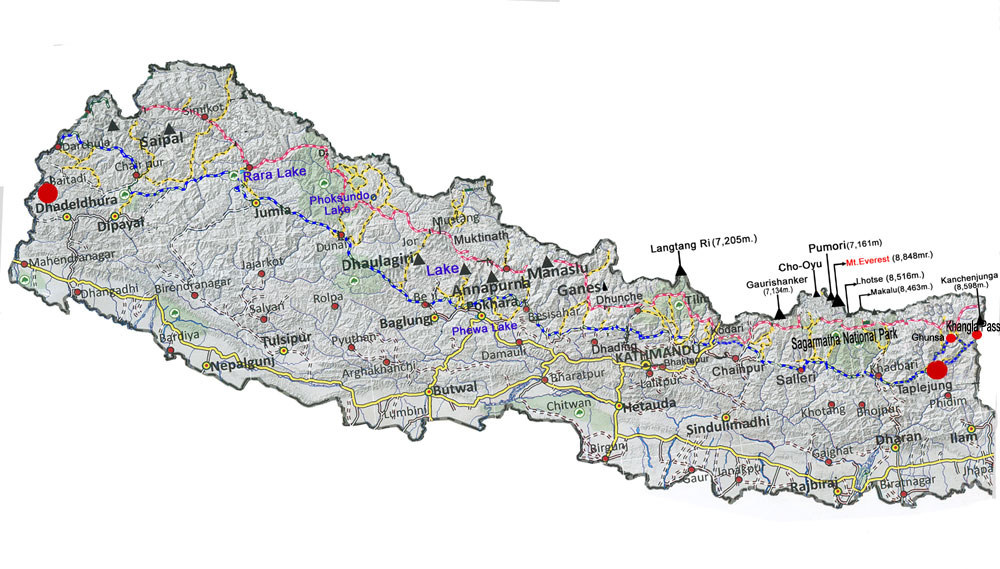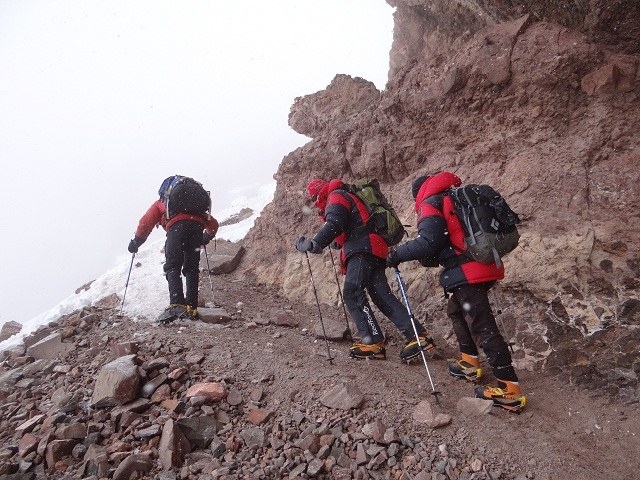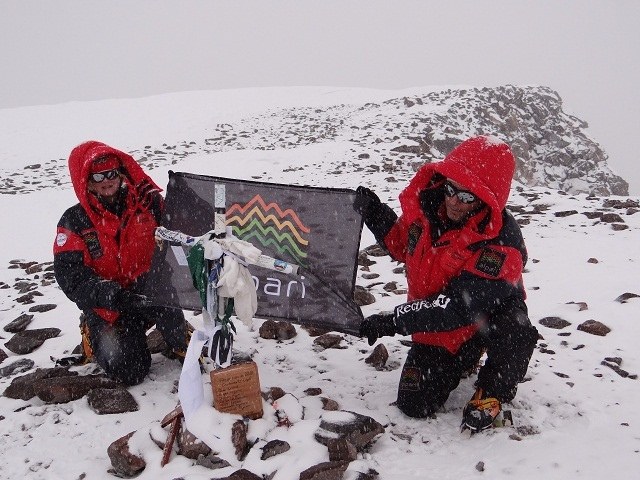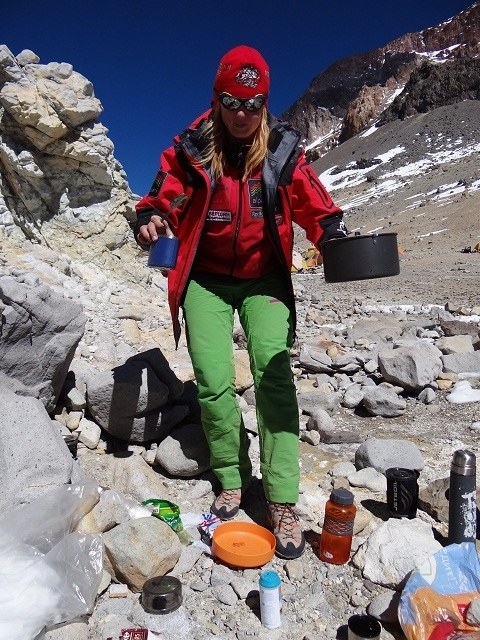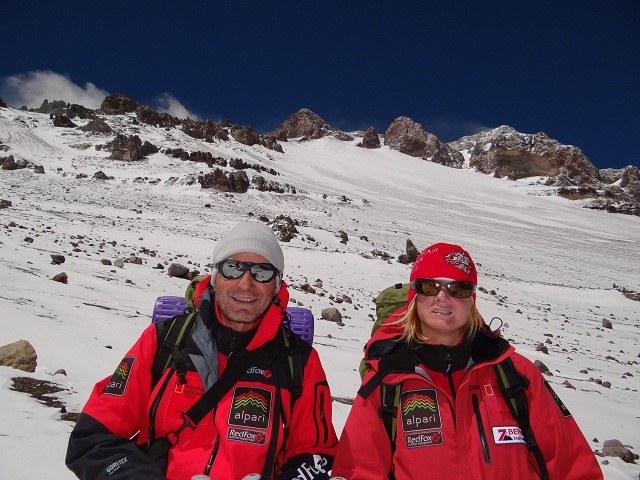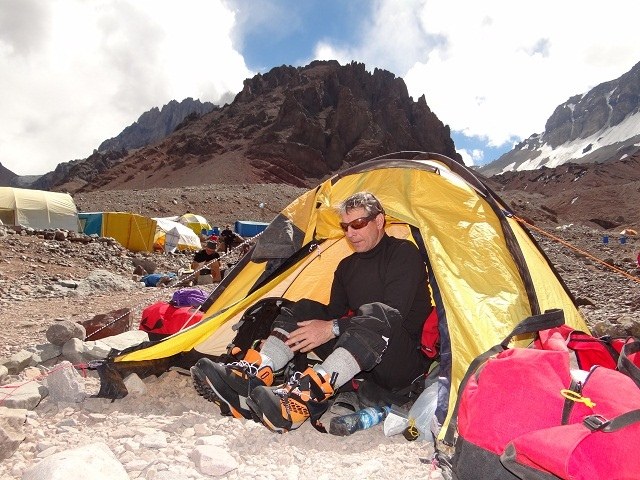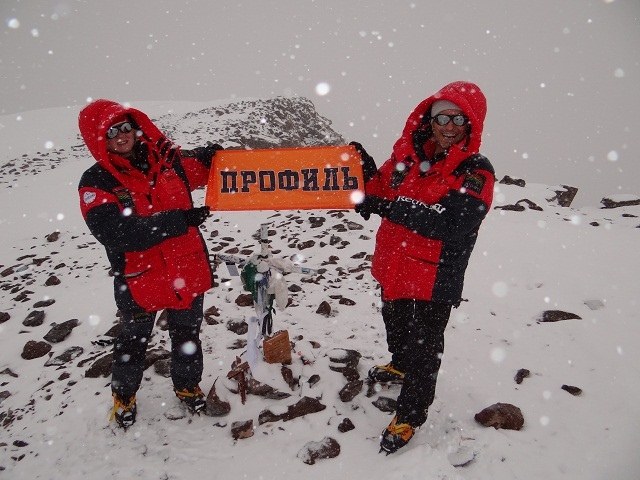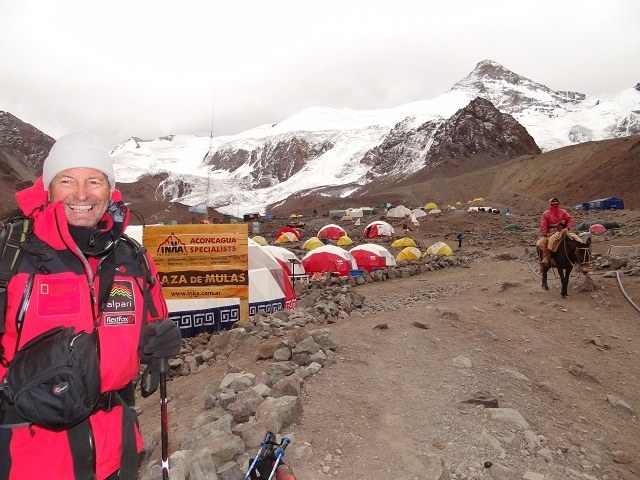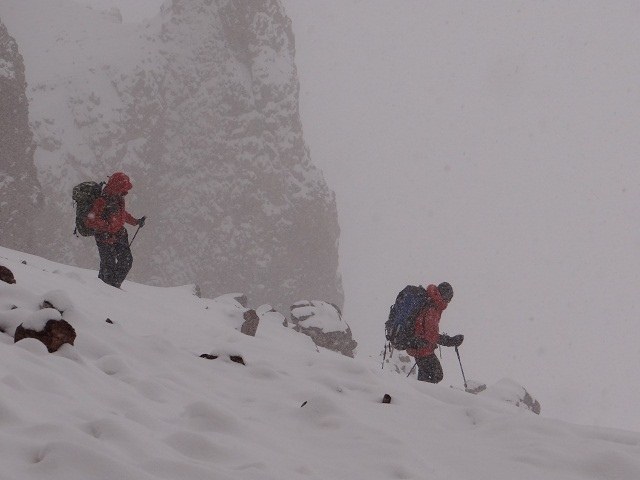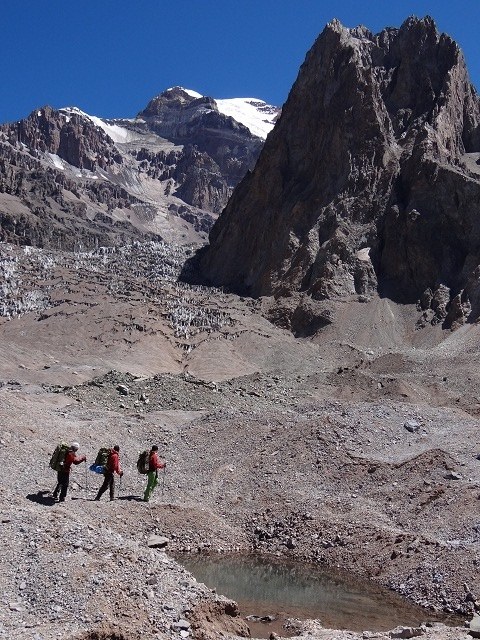All news
The beginning of spring season in the Himalayas
Today the big Himalayan season of the 7 Summits Club begins. In the evening our President Alexander Abramov flies to Nepal. In the first , he will prepare service for members and guides of our international Everest expedition. It will be ...
Today the big Himalayan season of the 7 Summits Club begins. In the evening our President Alexander Abramov flies to Nepal. In the first , he will prepare service for members and guides of our international Everest expedition. It will be our 10th time. This year, many well-known personalities will be part of the expedition. This is the famous Russian traveler Fyodor Konyukhov. Our great mountain climber Sergey Bogomolov, who will lead a team of Ingushetia. This is the trio of climbers working on the program "Alpari on top of the world." Ludmila Korobeshko, Ivan Dusharin and Maxim Shakirov will continue the recoed plan "7 summits in 300 days."
Also the guide of 7 Summits Club Denis Saveliev flies today in Kathmandu. He will run consecutively to the three groups, following different routes. First, it will be trekking and climbing the summit of Meru. Then, from April 21, it will be the program Island Peak climb and trek to Everest Base Camp.
It will be also a trek Annapurna Cercuit, which will be led by Olga Rumyantseva. And the big tour to Tibet, with a tour around Kailash (Kora), where the guides will be Dmitry Ermakov and Victor Bobok.
Artem Rostovtsev's team goes down after climbing Mt. Kilimanjaro
Kilimanjaro.
Hi, everybody! This is Artem Rostovtsev, practically from the top of Kilimanjaro. We were ten minutes ago on the highest point. All group left today on the storm … Unfortunately, two girls were compelled to turn back, without having ...
Hi, everybody! This is Artem Rostovtsev, practically from the top of Kilimanjaro. We were ten minutes ago on the highest point. All group left today on the storm … Unfortunately, two girls were compelled to turn back, without having reached the top ….
Our friend Lincoln Hall, who survived the Death Zone of Mt Everest, is died.
Everest.
Our sincere condolences to his wife Barbara and sons! Unfortunately, we didn't meet Lincoln more after expedition of 2006. We saw him in the film, read the book and thought that sometime the destiny will bring together us in Katmandu ...
Our sincere condolences to his wife Barbara and sons! Unfortunately, we didn't meet Lincoln more after expedition of 2006. We saw him in the film, read the book and thought that sometime the destiny will bring together us in Katmandu or in Sydney. Alas, the ruthless illness deprived of us such possibility. Lincoln Hall disappeared in history and took in it the worthy place.
From obituary
AUSTRALIAN MOUNTAINEER, LINCOLN HALL has died last night after a short but typically spirited battle with mesothelioma.
His wife Barbara and long-time friends and fellow mountaineers Tenzing Sherpa and Greg Mortimer were with him. Greg, the Australian Geographic Society's deputy chairman, phoned this morning to deliver the sad news.
"It was very peaceful in the end, around 11.45 last night," Greg said. "Lincoln got into quiet, rhythmic breathing - it was almost meditative - and then he quietly slipped away."
A brilliant, witty and open-hearted man, Lincoln was a key member of the 1984 Australian Everest Expedition that put the first two Aussies - Tim Macartney-Snape and Greg Mortimer - atop the world's highest mountain, and came within a few hundred metres of the summit himself. Lincoln's story of the expedition, White Limbo, is a classic of mountaineering writing and one of the best known of his several books. His successful 2006 climb of Mt Everest and famous survival epic after being left alone above 8000m in caught worldwide attention. His account of the story, Dead Lucky, was published in 2007.
Lincoln served on Australian Geographic's original editorial advisory panel in the 1980s, wrote several stories for the journal and was a great supporter of the AG Society and other Australian adventurers. His service to adventure was recognised by the Society in 2010, when he was presented with the Lifetime of Adventure award. He was also a founding director of the Australian Himalayan Foundation, which strives to improve education, health and environmental outcomes for people of the Himalaya region.
"I was lucky enough to walk with Lincoln in the Everest region in Nepal a few years ago and it's a trip I'll never forget," said AG editor and Society trustee Ian Connellan. "He was so funny and warm, and had such a wonderful, open, uncomplicated honesty. I'm terribly sad to know that I won't get to laugh with him again."
AUSTRALIAN mountain climber Lincoln Hall has died from mesothelioma. He was 56.
The world-renowned mountaineer, who was a member of the 1984 first Australian Everest expedition, died ''peacefully'' in Royal Prince Alfred Hospital in Sydney yesterday, said Australian Himalayan Foundation chairman Simon Balderstone.
His wife, sons and close friend and fellow mountaineer Greg Mortimer were with him.
Australian mountaineer Lincoln Hall with his wife Barbara in the Nepali capital after his rescue.
''Lincoln was well-known for his feat of survival on Everest in 2006, when, after summitting the mountain he collapsed just below the summit and had apparently died, only to be found alive the next morning by climbers on their way up the mountain,'' Mr Balderstone said.
Mr Hall's lawyer, Theodora Ahilas, from Maurice Blackburn, which recently concluded an asbestos compensation claim for Mr Hall, said his disease was allegedly linked to asbestos exposure as a child.
''Lincoln was an amazing man who was able to remember a remarkable amount of detail about his exposure to asbestos as a child,'' she said. ''It was alleged that in 1965 and 1966, Mr Hall assisted his father to build two cubby houses using asbestos cement flat sheets on their property in Red Hill in the ACT.''
Canberra Climbers' Association president Zac Zaharias said Mr Hall would always be regarded as a prominent climber. He said Mr Hall would be remembered not only for his amazing feats on Everest, but for his drive and moving writing.
He was also a compassionate man in his role as director of the Australian Himalayan Foundation, set up to help impoverished communities, he said.
In 2006, a rescue team of sherpas helped the veteran climber descend 1700 metres from where he had collapsed after a successful climb to the summit. It had been reported 24 hours earlier that Mr Hall had died on the mountain.
He had to be carried over several obstacles and restrained when he became delirious from altitude sickness. But word got back from the highest camp on the peak that he had walked the last few hundred metres into North Col camp before collapsing. He was left for dead on the mountain at 8700 metres when he broke down while descending from the 8848-metre summit. Those with him could not move him after he became delirious, a sign of oedema, or fluid on the brain. His companions in a Russian-led expedition were forced to leave him on the mountain overnight.
The next morning another group of climbers found him, still clinging to life, and a rescue party brought him down.
In a 2007 interview on ABC TV's Enough Rope, Mr Hall said he was attracted to climbing mountains because of the physical dangers, but also the challenges, like ''mental fortitude, physical fortitude, judgment''.
''It's the intensity of the experience, at a sustained level. The experience is incredibly intense because it is so dangerous,'' Mr Hall said. Away from the mountains, Mr Hall said his wife and their two sons made ''the world go round''.
Asked how she felt when her husband left the family to go climbing, his wife, Barbara Scanlan, said she knew she could never change that part of him. ''I guess climbing and, more so, mountaineering is such an integral part of Lincoln and what makes him tick,'' she said.
Start a new expedition to Ecuador
At Sunday, March 18 a new expedition of the 7 Summits Club started to Ecuador. The main aim is the ascent of the famous volcano Cotopaxi. A team consist of 18 people, all members of the well-known company "Mont", our regular partners. The ...
At Sunday, March 18 a new expedition of the 7 Summits Club started to Ecuador. The main aim is the ascent of the famous volcano Cotopaxi. A team consist of 18 people, all members of the well-known company "Mont", our regular partners. The name of the company shows its relationship with mountains and mountaineering. This is not surprising, as its founder and longtime leader it is a close friend of the 7 Summits Club Dmitry Moskalev. Dmitry was the second Russian (after Fyodor Konyukhov) who completed the Seven Summits program.
Guiding of the expedition to Ecuador will provided by an experienced guide of 7 Summits Club Victor Bobok. The coordinator of corporate programs of our Club Tina Taova will help him. Under the plan, the group will make two acclimatization climb on Pasachoa and Ilinitsa and then go to Cotopaxi.
In the final part of the journey, the expedition will go to the equatorial forests of Amazon jungle.
Photos from the American team Alpari
Kilimanjaro.
Climbing tour on Kilimanjaro, a group of Alpari officers from U.S. was successfully finished. All were on the top, although a month ago no one even thought of it. The weather was favorable, there was no rain during the daytimes, it was just ...
Climbing tour on Kilimanjaro, a group of Alpari officers from U.S. was successfully finished. All were on the top, although a month ago no one even thought of it. The weather was favorable, there was no rain during the daytimes, it was just a little wet at night. Snow and hail were only after the climb and a short rest at Kibo Hut. On the climbing day boys proved themselves as true heroes. None of them had never been before even at an altitude of 2000m, no one had any serious training. But all have shown tenacity and reached the summit. At the top the group met three Russian climbers engages in project "7 summits in 300 days" with the support of Alpari.
Artem Rostovtsev – a guide of the 7 Summit Club
Team:
Jaclyn Cole
David Makoso
John Wang
Jacob Plattner
Stan Klebaner
Mushegh Tovmasyan
Evening Party of the 7 Summits Club. Fedor Konyukhov and Others. Photos and Video ...
Everest.
We can say about a great success, even about a record that was set yesterday at a traditional evening of 7 Summits Club. Only registered users we had 70 persons. But there were those who came later, were not calculated. So the total ...
We can say about a great success, even about a record that was set yesterday at a traditional evening of 7 Summits Club. Only registered users we had 70 persons. But there were those who came later, were not calculated. So the total number of visitors at the event was about 200! Fedor Konyukhov plans were amazing. Until 2020, all is planed like this: "I come from a six-month campaign from the Arctic, and I am already waiting with a boat to cross Atlantic. I come from three month hike on camels, and I am already waiting for a solo submarine to reach America from Black Sea. "Great !”
All performances of our guides were extremely successful. It seems that most of the visitors appreciated it. Many did not want to go home, even after midnight. Well, we will wait for a new meeting. Hopefully, we can organize it in early summer, after returning from Everest.
The picture of Fedor Konyukhov was sold for 90,000 rubles (3000 dollars)
Dmitry Yermakov Antarctica 2011-12
Ludmila Korobeshko - Two summits from the program "Alpari - 7 summits for 300 days"
Climb with us
=
Ivan Dusharin Found Time to Write in His Journal
Kilimanjaro.
Alpari-life.ru. Africa… Kilimanjaro… Mountain climbing… These things just don’t seem to mix. But Team Alpari: On Top of the World is already here in Tanzania. It didn’t take long to figure out all of the ...
Alpari-life.ru. Africa… Kilimanjaro… Mountain climbing… These things just don’t seem to mix. But Team Alpari: On Top of the World is already here in Tanzania. It didn’t take long to figure out all of the logistical issues. The Seven Summits Club really knows what it’s doing. We’re already on our way.
It’s the 8th of March. In Russia, people are taking the day off. But we’re headed upwards, forging ahead along the steep and resilient jungle paths. There hasn’t been a single gentle slope or downhill section yet. We have a 1,300-meter climb ahead of us, a special Women’s Day gift. And this is only the beginning.
… An overnight, an early climb, then upwards again. And it’s only getting steeper. In all seriousness, we’ve had to actually “climb” part of the way. There are actually hooks in the rock. There may have even been a railing too at one point. We’re the only ones on this route. This isn’t a path for beginners. It’s really steep. Lyudmila is good at picking out the routes for the team. You can’t take it easy. You have to keep grinding away, even here on Kilimanjaro. We’re leaving the jungle now. We have a spectacular view of the mountain!
Fantastic! The beauty and grandeur of the mountain and the nature of the climb have been impressive. The rocky slopes, the icy ditches left by glaciers… it all feels so natural. Not many people get the chance to see this side of the mountain. We’re already at 3,900 meters. And it’s only been 2 days!
10.03 Today we have our most difficult climb ahead of us. As if it could get any harder! We have to climb to 4,600 meters, and in doing so, circle around to the other side of the mountain. You can’t make it to the summit from this side. Normally, this takes 2 days or so, but we need to do it in one. Oh well. We’re on our way. But wait! There’s a 200-meter rock wall ahead of us. It’s scary, something we’re not used to seeing. But it should be interesting. We’ll just have to climb it. Looking at the wall from the side is frightening, but it can be done. The rocks are monolithic, with passes, steps and safety hooks, so it should be relatively safe. We made it. Now it’s back down again, then up… By the evening, we made it to where we needed to go. We’ll have dinner and go to sleep.
11.03. We left at 1:30 at night to continue our ascent. With yesterday’s difficult climb and our anxiety before our storm of the summit, we didn’t get much sleep. But our commander is strict. We left at 1:30 sharp, the moon illuminating the path ahead of us. It all feels kind of mystical – the stars, the mountain, the glowing moonlight… We’re getting higher and its getting colder. Strange, huh? Africa… cold? Anyways, it’s cold. We’re wearing our down jackets. That helps a bit. But we still have to shake our legs periodically. It’s either that or “I froze in Africa”. And that wouldn’t be too funny, would it?
Just before 6:00 we made it to the brim of the crater. This is where we planned to meet the Alpari US team, which took the classic route. They weren’t there yet. We waited an hour and a half. We were about to freeze to death. Naturally, we were elated when they finally showed up. We continued onward together, reaching the summit of Kilimanjaro (5,895 m) in full strength. Hooray!
Photos and videos from Kilimanjaro
Kilimanjaro.
The first visual impression of the expedition "Alpari on top of the world." The first batch of photos and a video clip. No comments. Simply beauty. More pictures can be viewed at the project site: http://www.alpari-life.ru/kilimanjaro/ ...
The first visual impression of the expedition "Alpari on top of the world." The first batch of photos and a video clip. No comments. Simply beauty. More pictures can be viewed at the project site:
http://www.alpari-life.ru/kilimanjaro/
President Dmitry Medvedev led a meeting dedicated of tourism in the Northern Caucasus
Elbrus.
Today (11.03. 2012) Krasnodar hosted a meeting chaired by Russian President Dmitry Medvedev dedicated to the development of Russian resorts. The meeting was also attended by Deputy Prime Minister of Russia Alexander Khloponin, Economic ...
Today (11.03. 2012) Krasnodar hosted a meeting chaired by Russian President Dmitry Medvedev dedicated to the development of Russian resorts. The meeting was also attended by Deputy Prime Minister of Russia Alexander Khloponin, Economic Development Minister Elvira Nabiullina and Minister of Sport, Tourism and Youth Policy Vitaly Mutko, as well as heads of the regions of South and North Caucasus districts and representatives of foreign companies.
After receiving the data from Vitaly Mutko that only 59 subjects of the Russian Federation have developed a tourism program, Dmitry Medvedev has demanded to develop a realistic program for the development of tourism in every region of the Russian Federation, stressing that "there should be mutual responsibility."
The leaders of Dagestan and Ingushetia asked the president to increase the authorized capital of the "Resorts of the North Caucasus" in connection with the recent inclusion of these two republics in the program, RIA Novosti reports. Medvedev instructed the Minister of Economic Development Elvira Nabiullina to prepare a final report with calculations of how much money will it take to develop resorts in the two republics.
Nabiullina promised to prepare a report, but added that according to the preliminary assessment, "the inclusion of Dagestan in this program will cost about 40 billion rubles from the federal budget alone."
Russian President Dmitry Medvedev supported the presidential envoy to the North Caucasus Federal District Alexander Khloponin on the need to develop the Caspian coastal area with beach resorts.
The participants of the meeting discussed a wide variety of issues related to the development of tourism in Russia.
France ready to invest in N Caucasus
French companies are prepared to massively invest in helicopter building and also in the hospitality and holiday industries on Russian territory.
French presidential envoy for Russia ties Jean-Pierre Thomas spoke about this at a meeting with President Dmitry Medvedev in Krasnodar in southern Russia on Sunday.
He sits on the board of a joint company which is hoping to attract at least $10bn worth of investment in the holiday industry in the Russian Caucasus.
(TASS)
Russia developing resorts in the North Caucasus
Foreign companies have invested over 3 billion U.S. dollars to develop resorts in the North Caucasus. Russian investors have contributed almost a similar amount. Russian President Dmitry Medvedev revealed these figures addressing a conference in the southern Russian city of Krasnodar dedicated to promoting tourism in the North Caucasus.
Several resort zones in Southern Russia united under the “Resorts of the North Caucasus” will be turned into winter sports and year-round resorts. These zones are Lagonaki, a beautiful plateau located in Krasnodar region and Adygee, Arkhyz in Karachaevo-Cherkesia, Elbrus-Bezengi in Kabardino-Balkaria, Mamison in Northern Ossetia-Alania, Matlas in Dagestan and Tsori and Armkhi in Ingushetia. A network of resorts will also appear along the Caspian Sea shore in Dagestan.
The “Resorts of the North Caucasus” are a grandiose project in terms of territory and the amount of construction work. The overall length of Alpine ski runs exceeds 1,100 kilometers. Despite difficulties, many investors, especially foreigners, expressed readiness to go into this project. This has become possible owing to the businesslike work of the government which has done a lot to attract investors and partners, says Dmitry Medvedev.
“A government mechanism supporting the project was developed and amendments were made to the federal law on special economic zones in the Russian Federation. This law paves the way for solving the most difficult tasks. There was no such mechanism before. The residents of tourist and recreation type economic zones in the North Caucasus enjoy tax and duty breaks. Concrete results of this activity can be seen even now. The construction of the year-round resort of Arkhyz is in full swing, and it plans to receive tourists in the winter season of 2012. Construction of other resorts is now underway,” says Dmitry Medvedev.
At present, some of the tourist projects in the North Caucasus have already worked out their business plans with leading foreign companies. Among these are the French bank Caisse des Depots et Consignations, South Korea’s state-run energy company Western Power and companies in Singapore. The prestigious MIRIM Asia Awards-2011 International Developers competition assessed the project, describing it as the best project for the future.
Despite the rosy picture there are many problems related to the involvement of investors and the launch of construction, says Dmitry Medvedev.
“Among these problems are providing the resorts with contemporary infrastructures, their transport accessibility, the construction of roads, railways and airports. All this is very important for the attraction of tourists to the North Caucasus and the Caspian Sea. We will have to reconstruct at least 6 existing airports and build four new ones. It’s crucial to increase the passenger flow. At present, the capacity of the airports in North Caucasus is about 20,000 passengers a day. But this figure has to be increased five times to implement the large project, Dmitry Medvedev said.
The “Resorts of North Caucasus” is a very expensive project. It is financed under the principle of government and private partnership. At present, only a part of the necessary amount has been collected. According to experts, investments in the North Caucus tourist project will be paid off in 5-10 years. In short, the profitability of the project is up to 15 percent.
Two groups of expedition Alpari - at the top of Kilimanjaro
Kilimanjaro.
Early in the morning, the two groups met near the summit. The team of project "Alpari - 7 summits in 300 days" (Ludmila Korobeshko, Ivan Dusharin, Maxim Shakirov) climbed via the route Umbve. Guide 7 Summits Club Artem Rostovtsev climbed ...
Early in the morning, the two groups met near the summit. The team of project "Alpari - 7 summits in 300 days" (Ludmila Korobeshko, Ivan Dusharin, Maxim Shakirov) climbed via the route Umbve. Guide 7 Summits Club Artem Rostovtsev climbed with a group of managers of American office Alpari by Machame route. There were in the group: David Makoso, Jacob Plattner, Jaclyn Cole, Mushegh Tovmasyan, Stan Klebaner, John Wang. At 8:00 in the morning, they all met at the top of the massif of Kilimanjaro. And then, two groups together have gone down the Machame route. Congratulations!
Artem Rostovtsev from Kilimanjaro
Kilimanjaro.
Hello! This Artem Rostovtsev from Kilimanjaro. We go already third day. I must say, the company is excellent, very fun people. The guys are from the company Alpari, all Americans, but two of them came from the Union, one of Armenia, one ...
Hello! This Artem Rostovtsev from Kilimanjaro. We go already third day. I must say, the company is excellent, very fun people. The guys are from the company Alpari, all Americans, but two of them came from the Union, one of Armenia, one from Ukraine. Today there was a day of acclimatization at Horombo. We went to the Zebra Rocks, and a little higher up, came down to camp. And then we walked down the excellent canyon, even swim a little....
Alpari Group - 7 summits in 300 days stays in lager1 Umbve ..
Kilimanjaro.
Ludmila Korobeshko, Ivan Dusharin and Maxim Shakirov are in a camp at an altitude of 3000 meters. Yesterday's distance was longer than planned for 5-7 kilometers. Just because the rains have washed away the road. At night the monkey stole ...
Ludmila Korobeshko, Ivan Dusharin and Maxim Shakirov are in a camp at an altitude of 3000 meters. Yesterday's distance was longer than planned for 5-7 kilometers. Just because the rains have washed away the road. At night the monkey stole one shoe of Ludmila, but in the morning it was founded. Today, climbers will be a very long stretch.They want to be on top with a group Alpari led by Artem Rostovtsev...
Our friends played football at the top of Aconcagua
Aconcagua.
The group of climbers from Donetsk (Ukraine) climbed on March 2 the highest peak in South America, Aconcagua. A team led by the president of the Donetsk Regional Federation of Mountaineering, Sergei Kovalev has fulfilled all the objectives ...
The group of climbers from Donetsk (Ukraine) climbed on March 2 the highest peak in South America, Aconcagua. A team led by the president of the Donetsk Regional Federation of Mountaineering, Sergei Kovalev has fulfilled all the objectives of the expedition. Near the highest point, they held a symbolic football match on honor of the future of the European Championships, which will be held Ukraine and Poland, with several matches in Donetsk. According to another tradition, Donetsk climbers left at the top a capsule with coal that obtained in the mines of their native land.
Ascent of Aconcagua was a preparatory stage for the conquest of the planet's highest point - Mount Everest, to be held in April-May this year.
As he stated earlier, Sergei Kovalev, the ascent of Mount Everest will be devoted to the European Football Championship-2012. At the highest point of the World Ukrainian climbers are going to make a symbolic blow to the soccer ball in support of the Ukrainian national team at Euro 2012 championship.
7 Summits Club hopes that the Ukrainian team will be our good neighbor for our expedition in the base camp of Everest.
Greetings to the Roof of Africa! Moscow – Nairobi
Kilimanjaro.
On March 7, the day before International Women’s Day, Russia’s main spring holiday, our team is sending Ludmila Korobeshko off to perform great feats on the equator! The second mountain in our project is located in a place that ...
On March 7, the day before International Women’s Day, Russia’s main spring holiday, our team is sending Ludmila Korobeshko off to perform great feats on the equator! The second mountain in our project is located in a place that just about everybody dreams of someday seeing.
For those who haven’t read Hemingway’s description of the famous snows of Kilimanjaro… the great snowy giant, at the foot of which elephants and rhinoceroses roam free and the sun sets over endless jungle where troops of wild monkeys migrate from one place to the next.
So the Alpari team is flying off to Nairobi, which is the capital of Kenya, for those who don’t remember.
Of course we’re a little worried about our crew — they say that yellow fever had been rampant in Kenya. The Russian Health Ministry does actually recommend getting a yellow fever vaccination. Entering Tanzania is generally safe.
Bearing the nickname the “Roof of Africa”, Mount Kilimanjaro is considered the highest freestanding mountain in the world and will be the object of our attention for the next couple of weeks.
Kilimanjaro is located in Tanzania near the border with Kenya and is a mere 300 km from the equator.
The mountain has three separate peaks: Shira in the west (3962 m), Mawenzi in the east (5149 m) and the highest of the three, Kibo (5895). There is a glacier on both the northern and southern faces of Kibo, yet tropical jungle at the foot! The highest point on Kibo (and therefore the highest summit of the mountain) is the peak Uhuru.
Having scarecely had time to collect their thoughts after Argentina, our team is already packing for Africa where the temperature is currently +29-30 in the day, cooling off to +17 at night.
Alpari’s Management Team Getting Ready to Take on Kilimanjaro
Kilimanjaro.
Alpari: On Top of the World is heading to Africa. There, our trio of professional climbers will be joined by 6 members of the Alpari team. Here’s a little bit about each of them. David Makoso, Manager of Client Services at Alpari ...
Alpari: On Top of the World is heading to Africa. There, our trio of professional climbers will be joined by 6 members of the Alpari team. Here’s a little bit about each of them.
David Makoso, Manager of Client Services at Alpari (US), enjoys riding motorcycles, watching good action movies and traveling to warm islands with great beaches. About the trip, David said, “When this trip was first mentioned I was excited about the opportunity to be amongst a select few that will represent Alpari in this expedition. This summit will be a testament to our journey so far as a company and will also reveal a glimpse of what we can accomplish as a dominant force within our industry.”
Jacob Plattner is 29 years old and has been with Alpari (US) since June of 2010, working as the Vice President of Institutional Sales. He manages the Boston branch and is oversees the company’s global B2B solutions. Born in Baltimore, Jacob enjoys spending time with his family and playing hockey and golf. He is excited to have been chosen for the trip to Africa. “I have always wanted to hike one of the world’s largest peaks, very excited to being do it with Alpari and my colleagues.”
Jaclyn Cole, 25 years old, was born in Tarrytown, New York. She is the Head of Marketing for Alpari (US). Jaclyn is looking forward to Kilimanjaro: “I’m extremely excited for the opportunity to summit Mt. Kilimanjaro with some of the most instrumental team members at Alpari. I think this trip will be a testament to how hard we have worked to bring the US office to where it currently is and how well we can overcome challenges together to make it to the top. I also think the physical and mental strength that brings us all to the top of the mountain as a team will make this a once in a lifetime experience.” Jaclyn enjoys good food and fun in New York City, traveling, skiing, hiking, water sports, boating, meeting new people and spending time with her friends and family.
Hailing from Yerevan, Armenia, Mushegh Tovmasyan is the Global Head of Sales for Alpari (UK) Ltd. Mushegh, 28 years old, enjoys gadgets, sports and travel. “I’m a very curious person that loves to travel, explore and learn new things. Always adventure hungry but usually too busy for hobbies. When this trip was mentioned, I was certain that I am not in optimal physical condition, but the challenge is a perfect test of mental strength, dedication and ambition. I’m excited to be part of the global expedition to conquer the seven peaks.” We hope Mushegh has already begun his training.
Stan Klebaner, 32 years old, is also excited about the trip: “Although, I have been to Africa before; I view this as truly a “once in a lifetime experience”. I look forward to the challenge and a great adventure with my colleagues!” A US citizen, born in Odessa, Ukraine, Klebaner is the VP of Institutional Sales at Alpari (US). He enjoys traveling, running, tennis, golf, skiing, art and reading the classics.
John Wang was surprised when he was offered the chance to take part in the expedition: “While Alpari US has provided me with an excellent career opportunity – it has come with some perks! Being selected amongst my colleagues to participate in the Mount Kilimanjaro expedition came to me as a great surprise. I am very excited to be part of this group and look forward to the challenges and team work this trip will provide.” John, 27 years old, is from Inverness Florida and enjoys sports, traveling, food and Forex. He has been with Alpari (US) since 2010, working as the Head of US Retail Sales.
We’re looking forward to hearing what our colleagues have to say about the trip. The Alpari: On Top of the World team will be flying out to Africa on March 7.
Resque operations on Aconcagua
Aconcagua.
During 2010/11 season six climbers were killed in the "Roof of America." Along with the2008/09, both hit a record of fatalities. So far were about 6,500 climbers who visited the Aconcagua Park from November 15, 2011, 300 people more than ...
During 2010/11 season six climbers were killed in the "Roof of America." Along with the2008/09, both hit a record of fatalities. So far were about 6,500 climbers who visited the Aconcagua Park from November 15, 2011, 300 people more than when last season ended.
According to estimates, 3,500 were those who paid for climb and almost 3 000 opted for the short and long trekking. Number of resque evacuations reached 195, of which 170 were routine, 25 with some difficulty and 5 with an imminent threat.
The only case that could break the zero is the Spanish climber David Markaida Mendibe (42), who attempted to summit alone despite his expedition had 4 other athletes. Since the rescue team said their last sighting was 24 days ago and found no traces of him.
Maria Khitrikova dies on Mount Elbrus
Elbrus.
On 4 March 2012 the body of Ukrainian mountaineer Maria Khitrikova was discovered of Mount Elbrus, Russia. The news of young (a mere 21 years old) Ukrainian alpinist Maria Khitrikova whose body was discovered yesterday on Mount Elbrus, at ...
On 4 March 2012 the body of Ukrainian mountaineer Maria Khitrikova was discovered of Mount Elbrus, Russia.
The news of young (a mere 21 years old) Ukrainian alpinist Maria Khitrikova whose body was discovered yesterday on Mount Elbrus, at 5642m the highest peak in Russia, comes directly from journalist Anna Piunova. Maria was guiding a group of alpinists and had summited Elbrus on 2 March when she waited for two companions who had fallen behind in poor conditions. One of these, Roman Kutsiy, has been rescued and transported to hospital while the search is still underway for Denis Lisov. For Maria though, as Anna Piunova recounts, unfortunately no hope remained.
"Two groups of 11 Ukrainian mountaineers summited Elbrus on March, 2nd. They were caught in poor weather on their way down and two dropped behind. Maria Khitrikova, who was guiding one of the groups, stopped and waited for them while the rest of the party successfully descended. Several hours later Maria was able to telephone the rescue services to say that they had lost their way. Poor weather meant that the helicopter could not be sent, however the rescuers set out in search.
During the next evening the rescue team located Roman Kutsiy (at 4200m?), one of the two guys Maria had waited for. He was evacuated to hospital and was diagnosed angina pectoris after spending a cold night and day lying down on a snow flank and eating snow. Details are currently unclear, but according to Roman they untied after three repeated falls, the terrain was icy and Maria lost one of her crampons. They all were depressed and ready for the worst.
Her father, the famous alpinist Vladimir Khitrikov, arrived late night on March, 3. During the next afternoon Maria's body was found at approximately 4700m to the left of the Pastukhov Cliffs. The rescue of Denis Lisov is under way.
21 year-old Maria Khitrikova was the daughter of the Soviet Union Champion Vladimir Khitrikov. She was the big hope of Ukrainian Mountaineering, one of the country's most talented and promising female climbers. Considered the "Wondergirl of high altitude mountaineering", she summited Elbrus aged 12, her first 7000er aged 16, her first 8000er aged 21. She won the Elbrus Race and climbed Pik Lenin (7134m), Khan Tengri (6995m), Ama Dablam (6812m), Pik Korzhenevskoy (7105), Gasherbrum I (8035m) and Gasherbrum II (8068m)."
Anna Piunova, www.mountain.ru
National Geographic 2012 Winners: Sano Babu Sunuwar and Lakpa Tsheri Sherpa
The votes—nearly 72,000 of them—are in, and we're pleased to announce that Sano Babu Sunuwar and Lakpa Tsheri Sherpa are the 2012 People's Choice Adventurers of the Year. Their Ultimate Descent expedition to climb Everest, ...
The votes—nearly 72,000 of them—are in, and we're pleased to announce that Sano Babu Sunuwar and Lakpa Tsheri Sherpa are the 2012 People's Choice Adventurers of the Year. Their Ultimate Descent expedition to climb Everest, paraglide down, and paddle to the sea truly embodies the spirit of adventure. With borrowed gear and a bare-bones budget, there were no corporate sponsors nor social media campaigns, just the essentials for adventure—vision, creativity, and friendship.
The Ultimate Descent: Lakpa Tsheri Sherpa and Sano Babu Sunuwar
Two Nepalis complete a mission to launch a paraglider from Mount Everest’s summit and kayak the Ganges to the Indian Ocean.
When Lakpa Tsheri Sherpa first saw paragliders arrive in the Himalaya, he dreamed of flying above the massive peaks of his home—the Khumbu region. After his third successful summit guiding trip on Everest, he viewed paragliding as a simpler, faster, and more graceful way of descending through the peak’s perilous slopes.
In October of 2010, Lakpa borrowed a paraglider, got a few pointers, and launched from a hillside above his home. He promptly crashed into a tree. With his paraglider wing badly damaged, Lakpa set out for the town of Pokhara, considered to be the gathering spot for paragliders, to seek repairs and find a mentor. He ran into Sano Babu Sunuwar, whom Lakpa had met years earlier on Island Peak. Babu repaired the glider and the two men hatched the plan for the Ultimate Descent.
They would climb to the world’s highest point, launch a paraglider and fly for as long as possible, bicycle to a point where streams gathered into rivers, kayak across the Nepali border into India, and paddle the Ganges River all the way to the Indian Ocean. It would be an unprecedented first, but it was the overall combination of sports, audacity, and friendship that drew the duo to the idea. Babu, 28, had no climbing experience. Lakpa, 39, had never kayaked and didn’t even know how to swim.
In April of 2011, the duo had borrowed gear, slapped a basic plan together, and began their ascent of Everest. On May 21, they became the third party to launch a paraglider from the summit and set a new world record of 8,865 meters for free flight in the process. On the Kosi River’s Class V rapids, Babu got caught recirculating in a massive whirlpool in their two-man kayak, while Lakpa floated down river. Once they reached the Ganges, they paddled flatwater through unfamiliar country. They were robbed at knifepoint and had to live off fruit trees. After 850 kilometers, Lakpa and Babu reached the Bay of Bengal. On June 27, they became the first people to complete the descent from Everest’s summit to the Indian Ocean.
“When we arrived on the beach, we were frightened. We were surrounded by giant red scorpions,” says Babu. Later after showing pictures to friends, he would learn that these “scorpions” were in fact harmless crabs.
The Ultimate Descent team earned recognition from the international paragliding community, and the Nepali press hailed them as national heroes. Western adventurers admired their spunk, simplicity, and bare-bones budget. There were no social media campaigns, corporate sponsors, or expedition websites, just the essential ingredients for adventure—vision, creativity, and friendship.
—Fitz Cahall
THE INTERVIEW
Adventure: Babu, as a kayaker and paraglider, what was the most difficult part of the journey?
Sano Babu Sunuwar: On Everest I felt a great deal of discomfort. It was hard to breathe. Lakpa told me, “You are Sherpa. Be strong.” I am not a climber, but this was a great dream of mine to climb Mount Everest. Lakpa had done this many times. He helped me a great deal.
A: What was the most intimidating part of the journey?
Lakpa Tsheri Sherpa: The bugs. The ants. All animals—so active. Insects—so active. They are also busy. People so active. In the mountains, all creatures move slowly. In India, all the animals and the people move so fast. They are not still. I did not like the bugs. When we reached the ocean and took the kayaks to shore, the beach was covered in giant red scorpions. I was scared then, but we learned later that they were crabs and harmless. I also had a hard time breathing in the low elevation.
A: While the flight from Mount Everest might be the most eye-popping part of your adventure, it sounds like the Ganges and India were also difficult?
SBS: Sometimes whole villages would come down. We were robbed. They came with knives. We protected the camera, but gave them money. They left, but we paddled very fast. We could hear them coming with a motorboat. We found an island with tall grasses and hid. We slept in the kayaks the whole night.
LTS: We ate fruit from the trees, but the water was bad. We were not used to seeing dead bodies. In Nepal, we burn our dead. In India, they are put in the river. We would see two or three bodies a day.
A: For each of you, was there a favorite part of the journey?
SBS: Taking off from the highest point in the world. At first it was really windy, but the wind calmed. When we lifted off we were carried immediately upward.
LTS: The flight. I like to sing while I fly. We were very happy. We were both singing. This was a dream for both of us.
A: The "ultimate descent" earned you some attention both in Nepal and abroad. There was a short film made about your flight. What has it been like to be recognized for your achievement?
SBS: We love getting to share our dream. We came to Europe to show the film at a film festival. We feel a little like movie stars. People wanted to shake our hands. We were very happy to share our story.
LTS: When we got home, we were very excited to share our story not just with Nepal, but all over the world. It felt like a million people. There were a lot of foreigners who came to set records. We weren’t after a record, we just wanted to do all these things, climbing, paragliding, kayaking in one continuous trip
Apa Sherpa felicitated with the Guinness World Record
Apa Sherpa, the Nepali climber who has conquered Mount Everest a record 21 times was felicitated with the Guinness World Record. On the 44th day of the Great Himalayan Trail-Climate Smart Celebrity Trek lead by Apa, Guinness World Record ...
Apa Sherpa, the Nepali climber who has conquered Mount Everest a record 21 times was felicitated with the Guinness World Record. On the 44th day of the Great Himalayan Trail-Climate Smart Celebrity Trek lead by Apa, Guinness World Record Editor-in-chief Mr. Craig Glenday and his team met him and handed over a certificate at a function at Shree Saraswati Higher Secondary School in Gyalthum, Sindhupalchowk. Apa is accompanied by Dawa Stephen Sherpa (two time Mt.Everest Summiteer), Saurabh Dhakal and Sameer Jung Thapa, as part of a campaign to promote tourism and highlight the impact of climate change. The team that plans to walk 1,700 km has covered seven districts and a distance of 590 km so far.
“It feels great to receive this honour as Mr.Glenday himself has traveled this far to hand over the certificate. I feel proud to be identified all over the world,” Sherpa beamed. He further said, interacting with people is altogether a new experience to him and added, "Now onwards I will not climb up to the top of the world but I have been witnessing the hills and people for the last one and half months which has given me ample of opportunities to learn about the communities living in the vicinity of mountains". Hundreds of people attending functions expressed their happiness with the honour bestowed on Sherpa.
On the other hand Mr. Glenday expressed his feeling as “What Sherpa has achieved is unbelievable. He is not just a local hero but hero of the world. He is an inspiration to millions of people. It is a great privilege to hand him the official certificate. “The trip to Nepal has been amazing so far. It feels like I've been here for ever,” he added.
The sherpa from Thame, Solukhumbu; home town of Everest Legend Tenzing Norgay first summited Everest on 1990. Last year on May he conquered Everest for the 21sttime as the climbing leader of Eco Everest Expedition and became eligible for this award. He has shown his effort towards Everest clean up by engaging in Eco Everest Expedition since 2008 and continuing it for four consecutive years. He made his 18th summit in 2008, 19th in 2009 and 20thin 2010 and with Eco Everest Expedition organized by Asian Trekking to raise awareness about the impact of climate change.
Photos from a group of Alpari 2
Aconcagua.
February, 23 Ludmilla Korobeshko, Ivan Dusharin and Maxim Shakirov reached the summit of Aconcagua. The climb has been carried out by the route False Polish Traverse. The weather was very bad, it was snowing. But the forecast for the ...
February, 23 Ludmilla Korobeshko, Ivan Dusharin and Maxim Shakirov reached the summit of Aconcagua. The climb has been carried out by the route False Polish Traverse. The weather was very bad, it was snowing. But the forecast for the next few days was even worse. So they had to fight to the end. Now everyone is happy. The next day, a group of friends met them in the Plaza de Mulas camp. The first ascent of the project Alpari - Seven Summits in 300 days, is committed.
Alpari: On Top of the World
Alpari has decided to take on a new challenge for the year 2012: planting the Alpari flag atop the tallest mountain on each continent. To accomplish this feat, we have put together a team consisting of three of the finest mountain climbers Russia has to offer. With this project, we are not only looking to expand our presence across the globe, to each of the world’s seven continents, but also to draw some attention to mountain climbing, a sport which has become something of a passion for many within our ranks.
“Mountain climbing as a spiritual journey… record-breaking climbs as a metaphor for achieving greater success in life,” commented Alpari Public Relations Director Valeriy Tarasov. “This is something we can relate to. Alpari is a bona fide leader in the Forex industry. For us, there is no mountain too high.”
Mountain climbing is already somewhat of a tradition here at Alpari. As recently as 2010, a team of our employees took part in an expedition to Africa, planting the Alpari flag on the summit of Kilimanjaro. Not long before that, there was a trip to Mont Blanc. “Climbing mountains is a great tradition for us; one where we must overcome great difficulties, the cold and harsh living conditions. But we always manage,” said Alpari’s Chairman of the Board, Andrey Dashin.
No one in Russia has ever completed the world-famous “7 Summits” challenge in under a year. Alpari’s hand-picked team is looking to do just that!
We wish them good luck. And good weather.
